



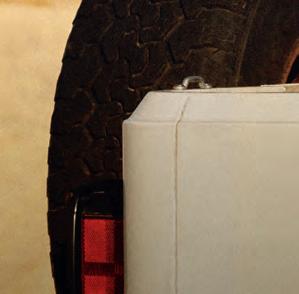

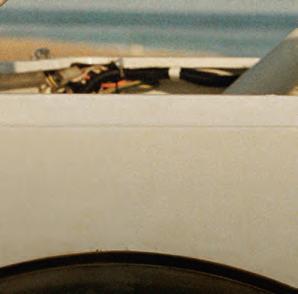
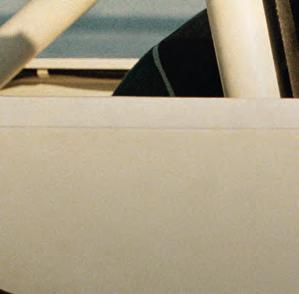
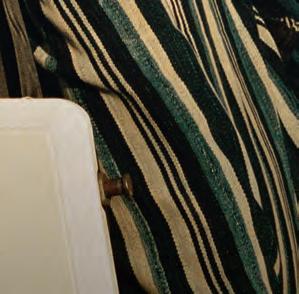






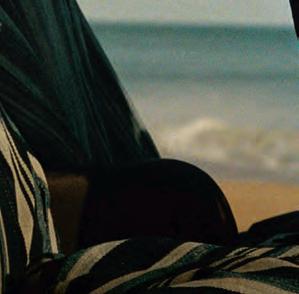
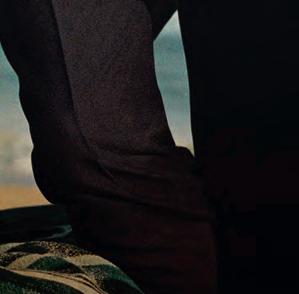
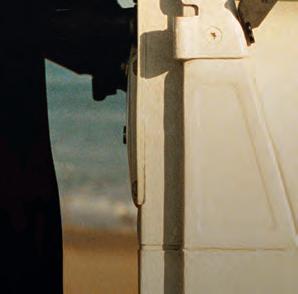







































WELCOME TO THE SUMMER EDITION OF GOODWOOD MAGAZINE. This is our busiest time of the year, when Festival of Speed presented by Mastercard roars into action. As we go to press, hundreds of people across the Estate are preparing to welcome more than 200,000 visitors to this beautiful corner of the South Downs to enjoy motorsport’s annual summer garden party. This year we will be celebrating the 75th anniversary of the F1 World Championship, so for this issue of the magazine we asked legends of the sport to share their most unforgettable moments (p50). We also talk to astronaut and FOS Future Lab ambassador Tim Peake about his role educating the next generation about the majesty – and vast potential – of space (p64). The Goodwood Interview is with Hollywood star, motorsport fan and Goodwood regular Jason Momoa (p36), who discusses his love of speed, his blockbuster career and his new artisanal vodka brand.
Goodwood Racecourse is also in its pomp during these summer months – a good time to appreciate Drew Doggett’s compelling photographs of horses around the world (p44). The Markel Magnolia Cup, our ladies-only charity race, is always one of the highlights of the Qatar Goodwood Festival. Meet one of this year’s riders, 18-year-old Sienna Anderson, on p29.
Elsewhere, we examine the history and changing face of some beloved summertime icons: the ice cream van (p30), the picnic set (p25), and the village fete (p21), all evolving with the years, but still going strong. And on our cover we celebrate that ultimate symbol of summer, the great British strawberry, best served with lashings of Goodwood cream throughout these sunny months. We hope you’ll enjoy a bowl or two, alongside some days of sporting exhilaration, at one of our events very soon.


Rebecca Adams
Working across TV and radio, sports broadcaster Rebecca has covered the past four Olympic Games and reported live from tennis Grand Slams and Masters tournaments. For this issue, on page 29, she interviews 18-year-old jockey Sienna Anderson, who is competing in this year’s Markel Magnolia Cup horserace at the Qatar Goodwood Festival.

Aaron Tilley
London-based photographer and director Aaron specialises in conceptual still life and creative food photography. His clients have ranged from The New York Times, Vogue and Creative Review to the V&A Museum, Google and Jaguar Land Rover. For this issue, he captured our striking cover image of a summer strawberry at its appetising peak.

Craig McLean
Known for his interviews with public figures, Craig is Consultant Editor at The Face and contributes to titles including The Daily Telegraph, The Evening Standard and Esquire. For this issue, he talks Minecraft and vintage motor cars with Hollywood star – and now vodka-maker – Jason Momoa, for The Goodwood Interview, on page 36.

Rebecca Starling
Having studied at the Royal Horticultural Society in London and the New York Botanical Garden, gardener and author Rebecca now lives in South Australia, where she operates a farm (the subject of her new book Secrets from the Flower Farm). On page 96, she looks at the recent florist trend that has seen roses cultivated and styled in new and unexpected ways.



Ian Gittins
Ian has written about music for titles such as The FT, The Guardian, Melody Maker and Q, and co-authored bestselling autobiographies with artists as varied as Nikki Sixx and Cliff Richard. On page 18, he reflects on the now multi-generational appeal of dance music, ahead of appearances by Groove Armada and others at Goodwood’s Three Friday Nights events.

Tommy Parker
An illustrator who enjoys the slow pace of life in Devon, or tries to, Tommy’s award-winning work is very much in demand. His past clients include titles such as GQ, Monocle, The Economist and Wired, and he has also worked for major brands including Penguin, Apple, Netflix and BMW. See his “How to be a better runner” illustration for us on page 94.
Editor
Sophy Grimshaw
Art director
Vanessa Arnaud
Editorial directors
James Collard Gill Morgan
Creative director
Sara Redhead
Sub-editor
Damon Syson
Picture editor
Sharon Martins
Project director
Sarah Glyde
Goodwood content director
Will Kinsman
Goodwood managing editor
Jennie Gott
Goodwood junior picture editor
Max Carter
For all advertising and editorial queries, please contact Goodwood via magazine@goodwood.com
Goodwood Magazine is published on behalf of The Goodwood Estate Company Ltd, Chichester, West Sussex PO18 0PX, by Uncommonly Ltd, 30-32 Tabard Street, London SE1 4JU. For enquiries regarding Uncommonly, contact Sarah Glyde: sarah@uncommonly.co.uk
© Copyright 2025 Uncommonly Ltd. All rights reserved. No
prior permission from the publisher. While every
in this publication, the publisher cannot

The Mercedes-AMG GT Coupé combines outstanding AMG performance, exceptional driving dynamics and pure luxury. Feel what words can’t describe. Book your test drive today.
Herbert List, “Man and dog, 1936” Night vision 18
See dance legends Groove Armada at Goodwood’s Three Friday Nights
A simple twist of fete 21
Updating the classic village fair Sporting chance 22
The charity helping to bring more women into motorsport
The smart set 25
Rediscovering vintage picnicware
A van for all seasons 26
Happy 60th birthday, Ford Transit
Living the dream 29
Teenage jockey Sienna Anderson’s journey to the Magnolia Cup Flake out 30
The origins of that summer stalwart, the ice cream van Pet sounds 32
How new technology is enabling dogs to “talk” to their owners




Mastercard is proud to champion women in motorsport, celebrating the heroes of today and inspiring the trailblazers of tomorrow.

OUR COVER STAR IS A BRITISH ICON: THE STRAWBERRY. A fruit close to our hearts, we serve thousands of bowls of these luscious berries to our visitors throughout the summer months at seasonal highlights including the Qatar Goodwood Festival and Festival of Speed presented by Mastercard. Strawberries in the British Isles have an intriguing history, as food writer Johanna Derry Hall recounts on page 92. But what of their classic accompaniment? One could make a strong case that it’s hard to better Goodwood’s organic double cream, which is processed on site at Goodwood Home Farm, one of the only self-sustaining organic farms in Europe. To thank for this bounty, as with Goodwood’s organic milk, is a herd of 200 milking cows. Most of these are Dairy Shorthorns, a breed that originated in the 16th century. Goodwood organic double cream is sold in the Farm Shop and used across the Estate, including for afternoon tea at Goodwood House. Tuck in.
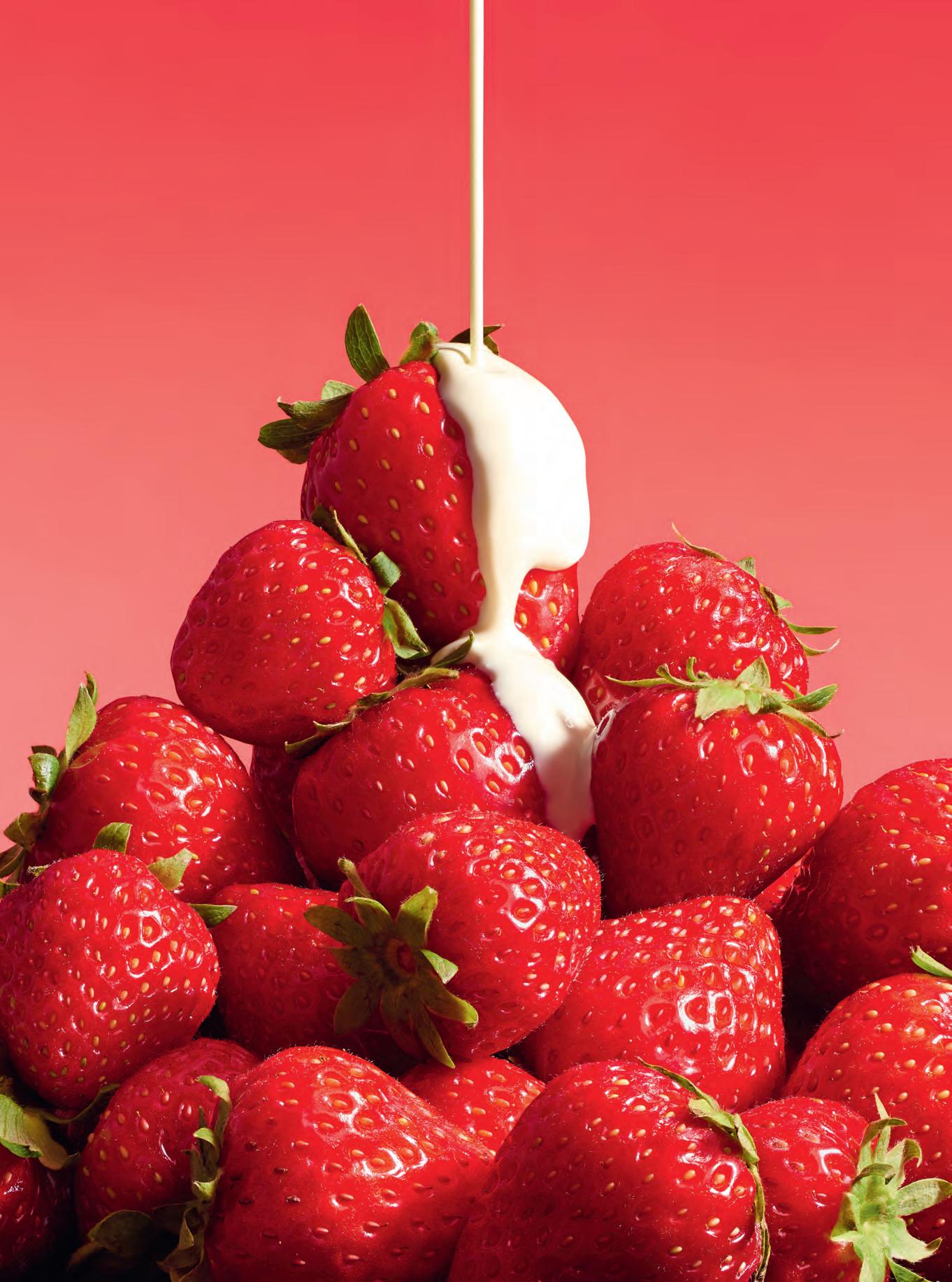



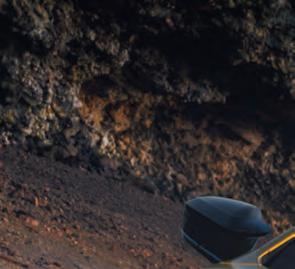











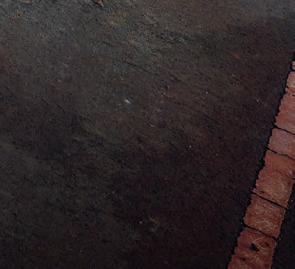










Noted: people, objects, news and ideas, from talking dogs, ice cream vans and stylish vintage picnic sets to the return of the village fete (with a difference)
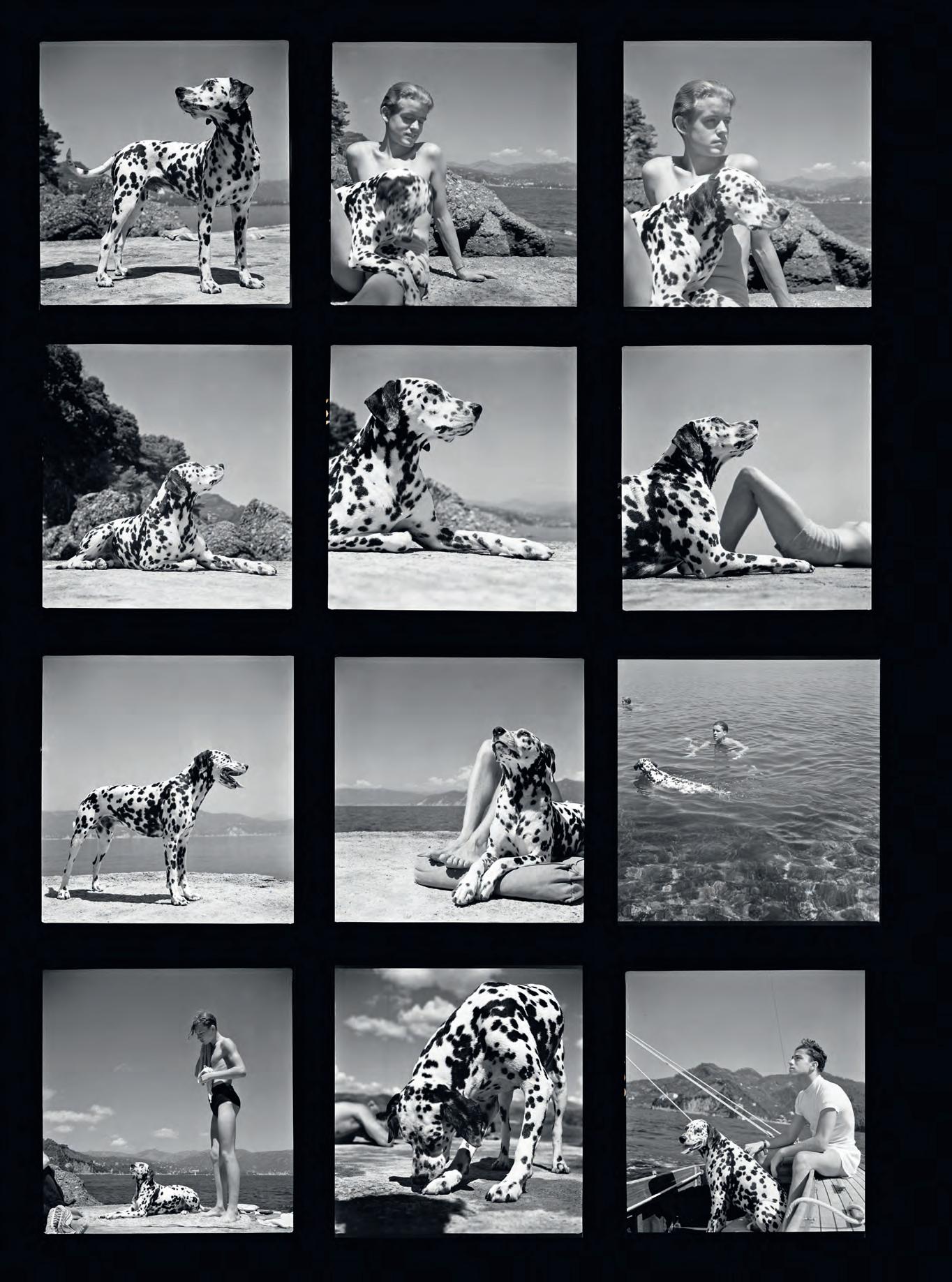
WORDS BY MATTHEW DAVIS
Fleeing Nazi Germany, photographer Herbert List took a break from shooting for glossy magazines to capture these stunning images
The handsome hound in this idyllic Mediterranean snapshot was captured by the German photographer Herbert List (1903-75) – sadly not on the Dalmatian coast, but in the glamorous Italian resort of Portofino, frequented by Hollywood stars and aristocrats from the length and breadth of Europe.
Behind this sunlit scene, however, lurk darker political clouds. List had arrived in Italy in 1936, after fleeing Hitler’s Germany – he had been warned that he was on the Gestapo’s radar as a gay man of Jewish descent with a noted distaste for the Nazis. So he traded a comfortable existence, working for the family coffee firm and enjoying photography as a sideline, for the itinerant life of a professional snapper, shooting for Harper’s Bazaar, Vogue and Life while staging his first solo show in Paris and preparing a book devoted to ancient Greek art and architecture.
Yet commercial photography held little satisfaction for List, whose prime influences were the classical world, the Bauhaus, and Surrealist artists such as Max Ernst and Giorgio de Chirico. He explained his working methods in a way the Surrealists would certainly have applauded: “The
pictures I took spontaneously – with a bliss-like sensation, as if they had long inhabited my unconscious – were often more powerful than those I had painstakingly composed. I grasped their magic as in passing.”
Forced to return to Germany in 1941, List was denied a work permit, though he somehow managed to photograph Pablo Picasso and Jean Cocteau on a short trip to Paris before the end of World War II. After VE Day, he documented the ruins of Munich and, in 1948, became art editor of Heute, an American magazine for the German public. Three years later, Robert Capa convinced him to become a Magnum photographer, shooting street scenes in Italy as well as photo essays and portraits.
List drifted away from photography in the 1960s, but his work lives on in the collections at MoMA in New York, the V&A in London and the Pompidou Centre in Paris. And this splendid canine portrait reminds us that every dog has its day – or at least a moment in the sun.
Purchase a print of Herbert List’s “Man and Dog, Portofino, 1936”, or his contact sheet, at store.magnumphotos.com

WORDS BY IAN GITTINS
As Goodwood’s Three Friday Nights events return with DJ sets from Groove Armada, Hot Chip and Artful Dodger, dance music is resonating with a new audience
Many of the party people who filled the dancefloors, fields and festival tents of the 1990s are now of an age where their weekends are occupied with childcare and some light DIY rather than partying – but they can still be persuaded to head out for the night from time to time. When they do, it’s as part of crowds that also include a younger generation of music lovers, whose listening discoveries are more likely to have been via streaming services than sticky-floored nightclubs.
Take the mix of euphoric dance music coming to Goodwood this summer. Over consecutive weekends in June, the Three Friday Nights events bring pioneering electronic-music duo Groove Armada, synthpop alchemists Hot Chip, and UK garage originals Artful Dodger to spin DJ sets in the Parade Ring.
Groove Armada, in both their live-show and DJing incarnations, have built a reputation for tremendous immersive experiences, leading audiences on an uplifting musical journey with the style they’ve shown since emerging from the house-music scene nearly 30 years ago (Andy Cato and Tom Findlay took their name from a London club night they founded). Along with their 1990s rave-fieldfilling peers The Chemical Brothers, Basement Jaxx, Underworld and Leftfield, Groove Armada now regularly fill headline slots at festivals like Latitude, Isle of Wight and even Glastonbury – slots that were once the sole province of guitarled rock bands.
“Heritage acts tend to rely on what they did back in the day, but Groove Armada are still bringing out new music that engages people,” says festival organiser Biff Mitchell, who is one of the main bookers at Glastonbury. “They DJ’ed at the Glade at Glastonbury last year and it was one of the best sets of the entire weekend.”
Rest assured, any Three Friday Nights attendees hoping to relive nights raving first-time-around to tunes such as At the River and I See You Baby won’t be disappointed. “Go to see Groove Armada and you can almost guarantee that they’ll drop an edit of Superstylin’ that you’ve never heard before,” says Mitchell. “The trick is to keep it fresh.”
Groove Armada will play Three Friday Nights at Goodwood on 6 June, with Hot Chip on 13 June and Artful Dodger on 20 June. Tickets can be purchased at goodwood.com/horseracing/three-friday-nights


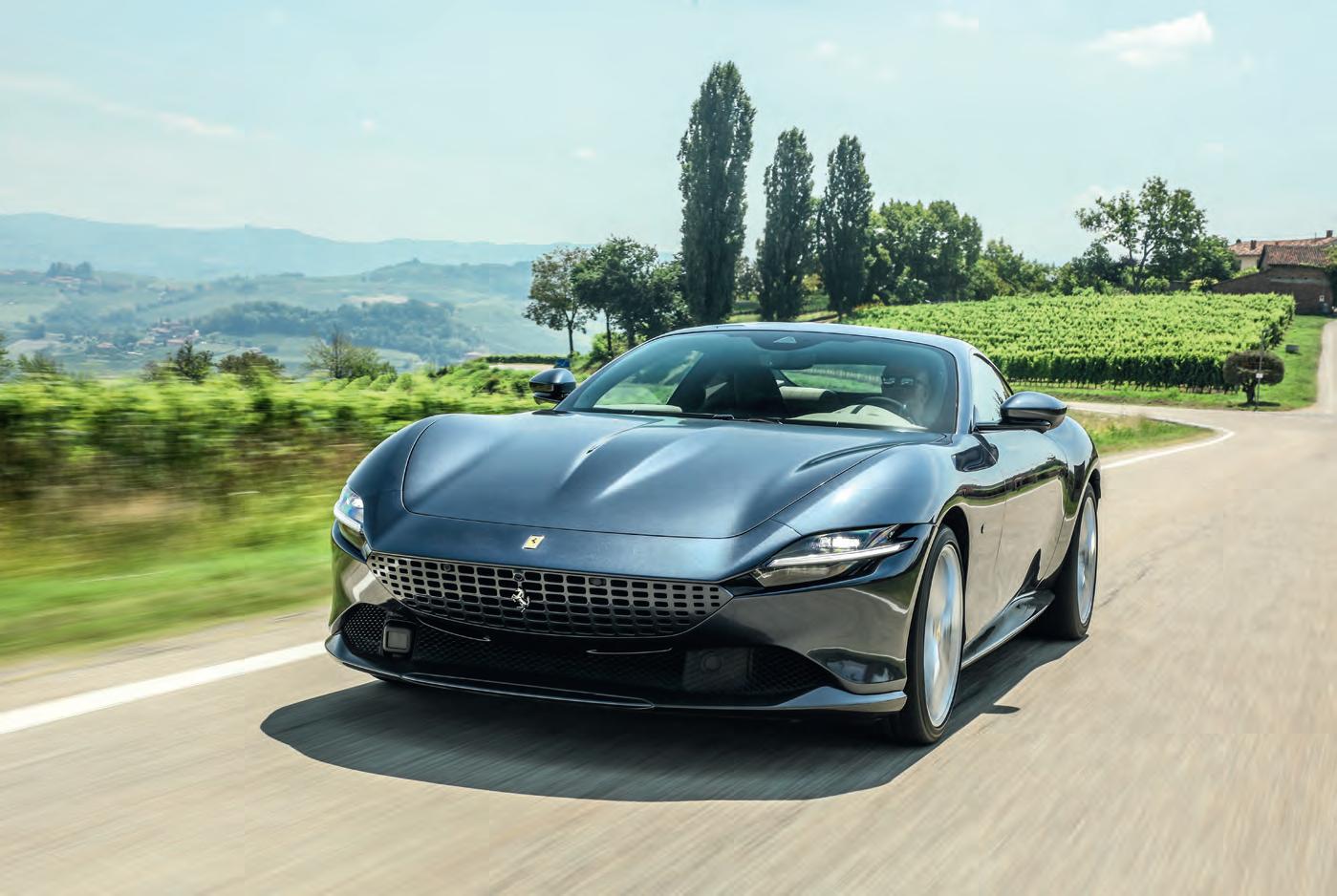
Discover the finest selection of Ferrari Approved, the official pre-owned certification programme.
Each Ferrari is unique. It is the bond that comes from the passion generated by a truly exceptional car, and a deep sense of belonging with everything that the Prancing Horse represents.
Let Ferrari guide you through a world that embodies the highest standards of performance, design, innovation and craftsmanship. Join this unique world with Ferrari Approved, the only pre-owned certification programme that preserves the originality of each Ferrari.
Performed exclusively by Ferrari technicians, Approved guarantees complete peace of mind, enabling you to enjoy the greatest possible driving thrills.
WORDS BY MARK HOOPER
Break out the bunting and dust that Victoria sponge, the summer fete is back in vogue – but in a new, updated form
This July sees the 50th anniversary of one of London’s more eccentric events: the annual Soho Village Fete. Billed as “a traditional village fete with a Soho twist”, the central London event features everything you might expect from a traditional countryside fete: tea and cake stalls, Morris dancing, a beer tent, and entertainment in satisfyingly straightforward formats, including a “splat the rat” game, a snail race and a dog show. A few unique events speak to the Soho setting, including a spaghetti-eating competition and a well-attended waiters’ race through the neighbourhood’s narrow streets. The tug of war contests include one between local police officers and firefighters. Ultimately, all the events are a contemporary expression of a peculiarly English phenomenon, and one with a surprisingly long and varied history: the summer fete.
The popularity, and character, of fetes has ebbed and flowed over time.
Just as the 1950s saw a rise in post-war patriotism and community spirit, so did the late 1970s, following the Queen’s Silver Jubilee. But village fetes can trace their origins back to the Middle Ages, at least. Nottingham’s annual Goose Fair is first mentioned in a charter of King Edward I from 1284.
These medieval market fairs also combined seasonal pagan traditions that are still celebrated today, including dancing around a maypole and the crowning of a May Queen.
Contemporary versions and reenactments of this kind of folkloric celebration still take place across the UK, with local communities reinventing the form to their taste, although a tombola and cake stall is more likely to be in the mix than a pagan ritual.
“I think they’re wonderful,” says Mathew Clayton, who acts as ringmaster for the very modern, slightly tongue-in-cheek Caught by the River Day Out, in Kingston near Lewes, East Sussex. Clayton loves the slight air of eccentricity of a good fete, and cites Sussex diarist Thomas Turner, writing in the 18th century, who recalled “a cricket game that was organised between everyone in the village called John versus everyone in the village not called John”.
“The perfect village fete requires a few key ingredients: tea and cakes from the WI, a beer tent, a bouncy castle, a tombola with some out-of-date tins and bottles,” says Clayton. “Ideally a headmaster or local vicar will be in the stocks – and receive a pelting with water-soaked sponges.”
Much of the above was included at the 1957 Woolton Village Fete in suburban Liverpool. Alongside the election of a Rose Queen, fancy dress, a police dog display and an ice cream van, musical entertainment was provided by a young skiffle band called the Quarrymen. But the event also marked another significant moment in English history, when a teenage Paul McCartney was first introduced to one of the Quarrymen, John Lennon. Amazing what can happen at a fete.
Today, new musical talent continues to find a stage at events including the Greenwich Urban Village Fete. “They are the foundation that Glastonbury et al are built upon,” argues Clayton. “Without the village fete, you wouldn’t have so many other kinds of festivals.”
Below: dancing around the maypole in Claverley, Shropshire, for the Queen’s Silver Jubilee in 1977

WORDS BY SOPHY GRIMSHAW
By introducing girls to opportunities behind the scenes as well as behind the wheel, the charity Girls on Track is shaping the future of motorsport
Jenny Fletcher was “a primary school teacher with a passion for motorsport” when she decided to change career. Today she is the UK programme manager for the charity Girls on Track, which evolved from the Dare to be Different initiative that racing driver Susie Wolff founded when she retired from the sport.
“Susie wanted to give back to the next generation of women and girls across the world of motorsport,” says Fletcher, recalling what inspired her to join Wolff in 2016 to help her deliver that vision. “One aspect of our work is about first touchpoints for girls aged 8-11 and 11-14. We encourage them to see what motorsport is, and to understand that it’s not just for boys. There is a rightful place for women across the board – it’s not just about the driving. Every weekend, 1,500 to 2,000 people behind the scenes enable drivers to race for a Formula 1 team.”
The girls the charity works with encounter female role models and have a chance to try a range of activities to build their confidence. Karting is the classic grassroots pathway into the sport, and one of Girls on Track’s most recent projects is a Girls Karting Academy for 8 to 12-year-olds. The charity,
which is part of not-for-profit Motorsport UK, also works with 16 to 24-yearolds. “It’s about helping them to get that foot in the door in the industry,” says Fletcher. “Now the charity is nine years old, we’re starting to see the women who have come through it going on to succeed and win awards.”
With the F1 World Championship celebrating its 75th anniversary in 2025, Fletcher is optimistic that the next 75 years will see a correction of the gender imbalance in motorsport, one of the few major sports without a universal men’s/women’s divide in its competitor categories. An all-female series has now been created to bring more women in. Fletcher is buoyed by the success of F1 Academy, launched in 2022 by Formula 1 to help female drivers progress to higher levels. “F1 Academy is definitely doing some great things, and it will have a knock-on effect, as there are more women to look up to, like driver Abbi Pulling, who won the F1 Academy drivers’ championship in 2024. We’re pursuing a long-term goal, and there has never been a better time for it than now.”
Discover more about Girls on Track at motorsportuk.org; Motorsport UK’s Inclusion Hub will also have a presence at FOS Future Lab 2025










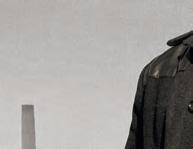










































































































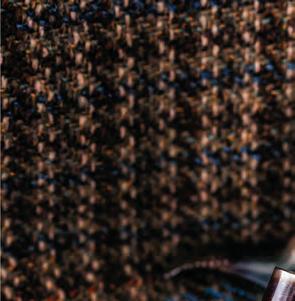
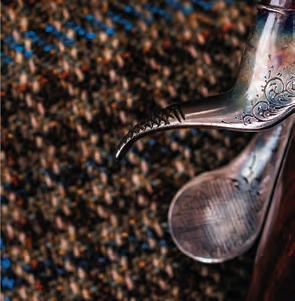
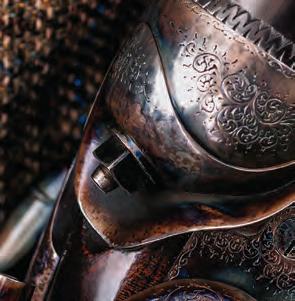

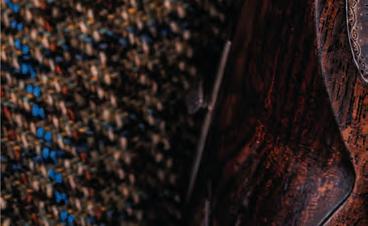
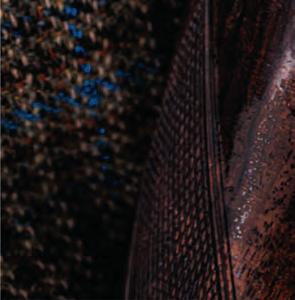


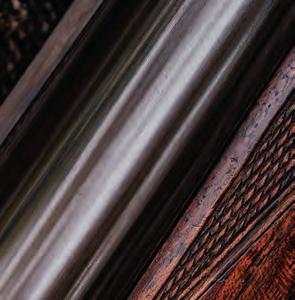
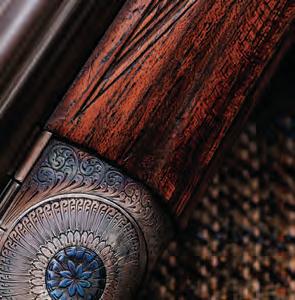

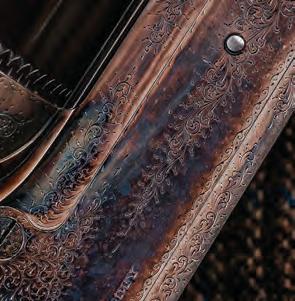
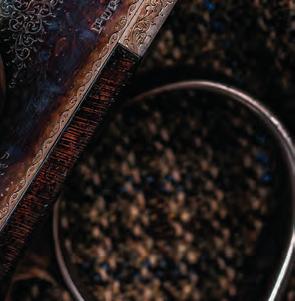















WORDS BY DOMINIC LUTYENS
Looking to add some panache to your alfresco dining this summer? From Edwardian hampers to Bakelite and Melamine sets, vintage picnicware is all the rage
Picnics may have been a summer mainstay for centuries, but the materials on which we’ve served up our sandwiches and scotch eggs have changed with the times, driven by new fashions and technologies. This is reflected in the market that now exists for vintage picnicware, particularly sets made in precursors of plastic, packaged in portable cases.
A version of the outdoor picnic as we know it today likely dates from the 18th century in France, as a rural repast enjoyed during hunting expeditions. Fleeing the Revolution, French aristocrats exported this tradition to Britain, broadening its appeal to the middle classes, who packed picnic baskets into landaus bound for summer horseracing events such as those staged at Goodwood.
From the 1730s, Fortnum & Mason sold baskets containing food, drink and cutlery, and, by the 19th century, the now-iconic wicker picnic hampers boasting plates, graduating to hard trunks in the early 20th century. A typical example incorporated Thermos flasks, salt and pepper shakers, plates, cutlery, canteen boxes and a burner for heating a copper kettle. Picnicking received a huge boost with the advent of the car, according to
Nik Oakley of The Vintage Kitchen Store, purveyors of picnic sets dating from the Victorian era to the 1970s. “Car-owning Edwardians loved lavish picnics,” says Oakley. “Hampers filled with cold pies, meats and desserts would be strapped to the car’s exterior, with the chauffeur serving drinks.”
By the 1940s, flasks, plates and cups were often made of highly durable Bakelite, a heat-resistant material also widely used, at the time, for automotive electrical systems. Another similar material was Beetleware, typically in eau-de-nil or ivory shades. The more informal lifestyles of the 1970s saw the introduction of compact vinyl shoulder bags encasing stackable picnicware in Melamine (another variant on reusable plastic).
Picnic sets from times past are now extremely desirable on the vintage market. Oakley’s guess is that this is because the sets are an easy, lowcommitment way to add some vintage flair to your day. “Some people embrace a full-on nostalgic lifestyle by dressing up, but with vintage picnic paraphernalia, you can enjoy just dipping a toe into the retro experience.” Pack a picnic, or shop for vintage treasures, at Goodwood Revival, from 12-14 September
WORDS BY PETER HALL
Prized by 1960s crooks for its nippy performance and generous cargo space, the Mk1 Ford Transit celebrates its 60th birthday this year
Of all the tasty motors featuring in Festival of Speed’s Cartier “Style et Luxe” concours d’elegance this year, one in particular was a favourite among 1960s bank robbers.
Anyone thinking of a classic Jaguar Mk2 is mistaken; its dodgy reputation was forged by film, TV and myth-replicating internet. ITV’s The Sweeney actually featured an S-Type, and while Jags were certainly favoured by Roy “The Weasel” James, amateur racer and getaway driver in the Great Train Robbery of August 1963, none were involved in that infamous heist. No, for a successful robbery you really needed a van: less conspicuous and more practical than any flash saloon. The Krays’ enforcer “Brown Bread” Freddie Foreman liked one with sliding doors for easy access in alleyways, but most villains chose a Ford, as the Met Police reported in 1972: “Ford Transits are used in 95 per cent of bank raids. With the performance of a car and space for 1.75 tons of loot, the Transit is proving to be the perfect getaway vehicle.”
Built at a former Hawker Hurricane factory near Slough, the Mk1 Transit appeared in 1965 and remained largely unchanged until the restyled Mk2 of 1978 was superseded by a second-generation model in 1986. By then, the Transit was a part of British life and language. With underpinnings derived from Ford’s car range and available as a van, pick-up, crew cab or minibus, it was not only popular with crooked geezers but with police forces, rock bands, school-trippers and tradespeople of every description.
The Mk1 Ford Transit gracing this year’s Cartier “Style et Luxe” is particularly special: it was built in the UK in the first month of full production in October 1965 and is one of two known surviving examples from that year. It will be joined by iconic vans of the same era made by other manufacturers, including Morris, Trojan, Volkswagen and Bedford.
To consolidate the success of the Transit, Ford also produced promotional versions. Supervan 1 was a 1971 collaboration with Terry Drury Racing that used a 4.7litre V8 from a GT40 and a Cooper Monaco chassis. It was acquired by Ford apprentice Andy Browne, who rebuilt it twice, firstly in 1973, and again in 2024 – the same year an all-electric Ford SuperVan 4.2 swished up the Goodwood Hill in 43.98sec, winning the Festival of Speed Timed Shootout. Even Roy James would have been impressed by that.
The Cartier “Style et Luxe” concours d’elegance will take place at Festival of Speed presented by Mastercard, 10-13 July 2025

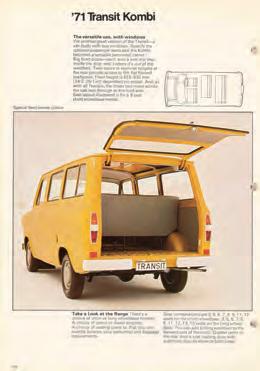
Below: 1971 Ford Transit. Above: as promotional material for the ’71 model shows, performance and versatility were key to the van’s success


Welcome to the future: Your Al and your data, working together in real time as a sovereign platform-anywhere, anytime, any way you need it. Welcome to EDB Postgres® Al



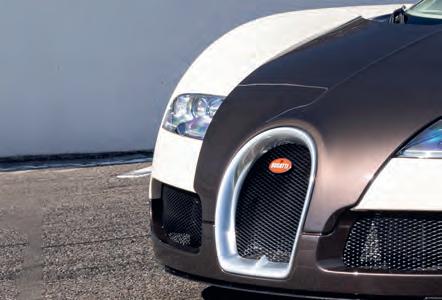









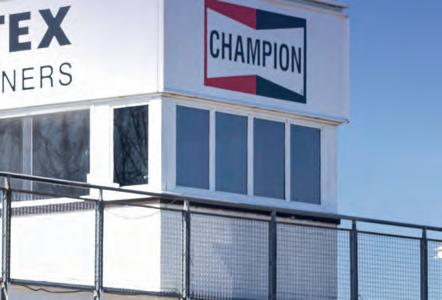

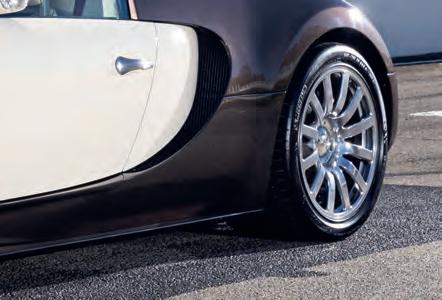



For teenage jockey Sienna Anderson, competing in Goodwood’s all-female Markel Magnolia Cup isn’t about winning, it’s about inspiring others
Not many people are lucky enough to realise their childhood dream by the time they’re 18, but when Sienna Anderson thunders past the grandstands at Goodwood this summer, she’ll be living hers. The jockey, raised in innercity London, will be competing in the prestigious Markel Magnolia Cup.
“None of my family are horsey people,” she laughs, “so becoming a jockey wasn’t exactly an obvious career path.” Yet even at the age of seven, Anderson had an inkling. “There’s a photo of me in school: we had to write what we wanted to be when we grew up, and I put ‘jockey’. Everyone thought it was hilarious. I was so confused, because I was serious. My family didn’t know how to get me into it – we had no idea where to start.”
Anderson’s break came when she was selected for the Riding a Dream programme, which introduces young people from diverse backgrounds to equestrian sport. That opportunity eventually opened the doors to training at Newmarket, where early mornings and hard graft are all part of the package. “It’s not as glamorous as it looks,” she says. “There are days when I sit and think, ‘This is hard.’ But those days make the good ones even better. When things go right, I think, ‘I’m glad I got up for work this morning.’”
Lately, those mornings include training for the Magnolia Cup, a highprofile charity race for non-professional riders, whose competitors are
inspirational women in sport, fashion, media, and business. Anderson hopes her determination will persuade others from under-represented backgrounds to pursue new challenges. “I’d rather inspire someone than win,” she says. “If someone sees me and thinks, ‘I’m going to give it a go,’ that means more than winning. Growing up, I saw how narrow-minded people can be. I moved away to pursue a dream. If my story encourages just one person to step outside of that, then that’s a win for me.”
Anderson has been helped along the way by Naomi Lawson, co-founder and director of the Riding a Dream Academy. The charity was formed in response to the success of jockey Khadijah Mellah, a previous Magnolia Cup winner. “Goodwood has always said ‘yes’, always supported us,” says Lawson. “I don’t think it’s overstating it to say that the academy wouldn’t have happened without Goodwood.”
This summer on the Goodwood Racecourse, Sienna Anderson isn’t just chasing victory, she’s clearing the path for those who never thought they would be in the saddle.
The Markel Magnolia Cup takes place on 31 July at Qatar Goodwood Festival, in aid of The King’s Trust International’s Project Lehar, a charity empowering adolescent girls in India through skills and training


WORDS BY ALEX MOORE
Originating in the USA, but embraced by the UK, nothing heralds summer like an ice cream van. But where does our love of wafer cones and soft-serve vanilla come from?
Entrepreneurial types have been cashing in on sunny weather since before records began. In 1853, the year before the Met Office was founded, there were at least 20 itinerant ice cream salespeople in London. These early vendors would wheel their flavoured ice cream over cobbled streets using handcarts or horse-drawn wagons, announcing their arrival by ringing a large bell. Edible wafer cones were introduced at the turn of the century and quickly replaced the sturdy reusable glass receptacle known as the “penny lick”. By the early 20th century, motorised ice cream vendors, or “Hokey Pokey” men, provided frosty refreshments to a nation still awaiting the invention of the fridge-freezer.
Origin stories for the ice cream van as we know it today vary, but one standout historic moment was St Patrick’s Day 1956, when Irish-American brothers William and James Conway fitted a soft-serve ice cream machine into the back of their truck, added some food colouring, and took to the streets of Philadelphia to sell green ice cream. Mr Softee was born.
Three years later, in 1959, Mr Softee was introduced to the UK by Lyons Maid. They were beaten to the punch, however, by Birmingham-based businessman Dominic Facchino, who founded arch-rival Mr Whippy the previous year, selling it to Wall’s in 1966. The popularity of these two brands, and their imitators, exploded during the 1960s thanks to Crewe-based Whitby Morrison, the world’s leading manufacturer of ice cream vans, whose vehicles are present in more than 60 countries today.
“In continental Europe the tradition is for parlours, whereas in some countries, including the UK, the ice cream van is an institution,” says Paolo Loraso, a second-generation vendor who was voted UK Mobiler of the Year in 2024 by trade association the Ice Cream Alliance. “My dad started our family’s ice cream business in 1981, and from a young age I was jumping in and out of vans, carrying boxes of cones and flakes.”
Loraso’s van was one of the 98 vehicles that set the Guinness World Record for the largest parade of ice cream vans at Goodwood Motor Circuit in 2022. “It’s not a guaranteed salary,” he says of his admittedly precarious trade. “I’m going out with my van today and I don’t know what I’m going to make, but that’s the nature of the ice cream business.”
And yet Britons’ reliable desire for a cold cone on a hot day continues to keep Loraso on the road. “In this country,” he says, “it’s embedded into your consciousness when you’re young. You hear the music and you run for that lovely taste of nice, soft ice cream with a flake.”
WORDS BY SOPHY GRIMSHAW
Can dogs talk? The answer, thanks to newly popular sound board technology, appears to be yes

“If a lion could speak, we could not understand him,” wrote the philosopher Wittgenstein, on the difference between human and animal minds. But what about a dog? The popularity of “talking buttons” for dogs – and the nuance with which some canines appear to be communicating using these tools – has caused pet-parents to rethink what their dog might want to tell them.
There are now multiple brands creating push-button sound boards for pets, similar to those used by some non-verbal people. These learning systems encourage dogs to step onto a labelled button to “speak” words chosen by their owner. Some dogs can regularly use 100 buttons or more, making what appear to be considered choices. This has made for entertaining social media content but it has also drawn serious attention from scientists in the field.
Among the prominent “talking dogs” is Bunny, a sheepadoodle. Seattle-based entrepreneur Alexis Devine started teaching her puppy to communicate with buttons from eight weeks old. Bunny gained a social media following thanks to her striking use of a system made by California-based company FluentPet, the best-established sound button manufacturer. Bunny is seen, for example, to push “ouch” and then “paw” to show Devine a splinter. She even seems philosophical at times, asking: “I am dog… why?”
Devine was inspired to try sound buttons by the speech and language scientist Christina Hunger, who pioneered the use of these with her dog,
Stella. Bunny is now part of an ongoing canine cognition research study at the Comparative Cognition Lab at University of California San Diego. FluentPet CEO Leo Trottier says that some examples of dogs’ use of the buttons suggest emotional awareness, such as when “a dog comforted a crying owner with ‘love you’ and ‘hug’. Another pressed ‘help’, ‘ouch’ before a hidden ear infection was found, as a medical alert.”
Some dogs appear to take initiative to combine the buttons in unexpected ways. A Michigan-based beagle cross named Parker will push “squeaker” and then “car” to describe the sound of passing ambulances as “squeaker-cars”. As her owner Sascha sees it, “The buttons don’t supplant Parker’s other communication; they just add another dimension.”
A key question, if we are to agree that dogs are indeed using the buttons deliberately – which is contested – is whether this suggests any genuinely new level of mental ability in dogs than what we were already aware of. Assuming dogs can use the buttons, there is also debate as to whether we should want them to: should canines simply be allowed their own natural expression, rather than further accommodating humans? For Alexis Devine, the answer falls somewhere in the middle: “I would love for the greatest take-away to be, not that our dogs can talk, but that they have already been saying it all along – and we just haven’t been listening.”
Talking buttons for dogs are available from multiple brands, including eu.fluent.pet



Tales worth telling, from 75 years of F1 motorsport to life on Earth with retired astronaut Tim Peake.
Plus: The Goodwood Interview with Jason Momoa
Words by Craig McLean
“I always feel like I’m on the roam, a vagabond, a nomad”

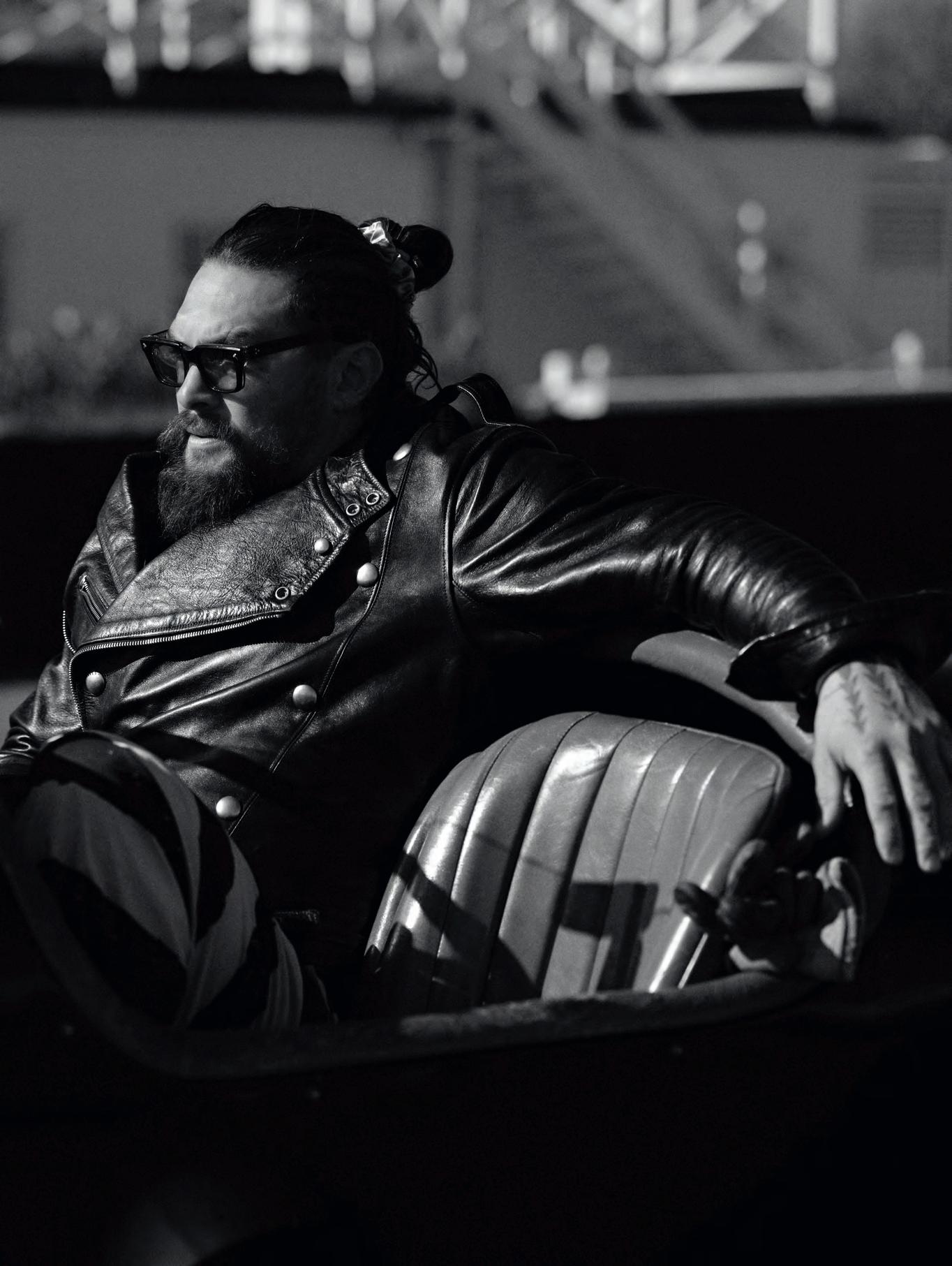

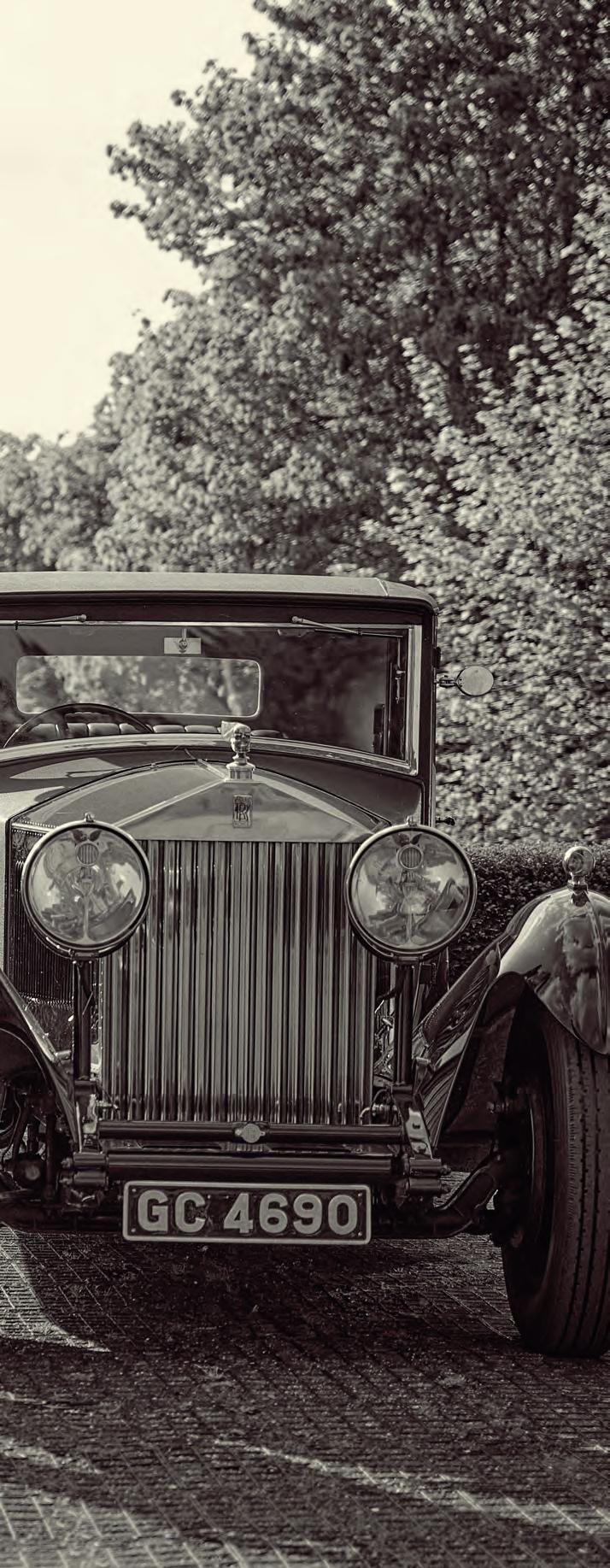
Jason Momoa is a master of the side-hustle. The Hollywood star is sojourning in London, where his full-throttle schedule includes shooting a new blockbuster film, performing gigs with his heavy metal band, and visiting Goodwood Motor Circuit for a masterclass in racing vintage Bentleys. All this, and he’s even found time to launch a vodka brand
Jason Momoa has splashed down in the UK – comic-book fans can probably imagine the Aquaman star’s perfect “superhero landing”, as performed by his mask-wearing, world-saving peers in the DC and Marvel cinematic universes. And now that the fridge-freezer-sized action movie star is here, the aftershocks are rippling out from Hollywood to, well, Goodwood.
So far during his springtime stay in England, the actor, entrepreneur, music nut and wheels obsessive has hung out backstage with Jack White at East London’s Troxy theatre; appeared onstage with heavy metal legends Pantera at Wembley Arena; brought the boozy party for the launch of his own alcoholic spirit; and visited Goodwood in pursuit of his British racing licence. Right now, on the weekend of our interview, he’s put down his Aquaman trident and picked up his bass guitar for three back-to-back club shows with his three-piece rock band ÖOF TATATÁ.
“Aloha!” booms the Hawaiian-born 45-year-old from the backseat of a vehicle speeding him across London. It’s the morning after the night before. Yesterday was the first of the aforementioned gigs, at the tiny Lexington in Islington. Onstage at the 200-capacity sweatbox, this hard rock aficionado had played his bass through a Marshall 1992LEM amplifier. It’s named in honour of one of his heroes, late Motörhead frontman and bassist Lemmy. “Oh, man!” he says now, exhaling heavily. “First time being able to play in London, with all my friends there? It’s a dream come true.”
Next up, a few hours from now, a Saturday night rock ’n’ roll “pop up” in new Chelsea speakeasy The Rex Rooms, liberally fuelled by shots of Momoa’s vodka brand Meili, followed by a Sunday night ÖOF TATATÁ show at Omeara in Southwark. There, the band of beardy brothers will be joined, in a grungy rendition of The Cranberries’ Zombie, by young singer-songwriter Oriana Robos. She was talent-spotted by Momoa while performing in a London pub, when the Guinness-loving actor was in for a pint or three –“so we invited her [to sing with us]”.
All this “while I’m shooting a superhero movie!” he says of the production that has brought him back to the UK, Supergirl: Woman of Tomorrow, a major new franchise push from a revamped DC Studios. “And slinging the greatest vodka in the world! And getting everybody all happy! When do I have time to sleep?”
When indeed. Momoa is a dude in perpetual motion, a six-foot-four, 240-pound dynamo travelling through the world – and his multiple, overlapping interests – with remarkably frictionless ease. His Instagram handle is @prideofgypsies, referencing a full-throttle professional life lived on the move after he started out as an actor, aged 19, in TV series Baywatch Hawaii. Since then, he’s filmed all over the world, from Vancouver for sci-fi series Stargate Atlantis to the island of Gozo for his two series as Game of Thrones’ horse-riding, clothes-eschewing warrior Khal Drogo.
These days the actor bounces between film sets in London (“I’ve been coming here for 20 years – 100 per cent it feels like another home. I’ve shot here more than I’ve shot in the States”), location shoots in New Zealand (where he filmed recent kids’ romp A Minecraft Movie and upcoming Apple TV+ series Chief of War, a historical Hawaiian epic that he co-created, produced, stars in and part-directs) and his home in Montana. The rugged western state is also the home of Meili. The vodka brand’s taste and ecocredentials are built around a local water source that is, according to his Meili partner and “best friend” Blaine Halvorson (riding shotgun on today’s cross-London car-ride), a “300-million-year-old aquifer that comes up through a limestone shelf”.
Momoa explains that he and Halvorson, who has a clothing company called Madeworn, have been working together for “15-plus years”. Via his costuming skills, he’s helped the actor “build characters” including Aquaman and Declan Harp, the 18th-century Canadian trapper that Momoa played in 2016 TV series Frontier. “He does all my hero looks. We did a Carhartt campaign [together]… Then we did [a clothing collection for] Harley-Davidson. And we were sitting around going: ‘We should make something for ourselves, because we’re always making stuff for other people.’ And he’s like: ‘Dude, let’s get into spirits – let’s make a vodka.’”
At first Momoa was sceptical: “I’m like: ‘Why – so I don’t drink it?’ [Because] that stuff is gross.” Halvorson explained that he, like everyone, had vodka all wrong, because they “treat it like an ingredient. No one could ever drink it neat.” But the friends could change all that, make vodka a premium spirit with its own appealing taste, by focusing on its core ingredient: water.
“That was Blaine’s sell to me,” continues Momoa. “And we set out. Took us about seven years. We travelled around the world. We went to Antarctica, [and did] the Shackleton route, the Northwest Passage… We brought waters back and tested them with our mash in Montana. We discovered that the flavour profiles changed with each one – and [after] we went looking for these pure water sources, we ended up finding one in our backyard, in Montana.”
As Halvorson explains, “What makes that water so unique is that there’s little-to-no sodium in it, so it makes our vodka sweet. There’s no salt blocking the sugars, which allows all the beauty of the grains to come through. We single-distil for that reason. One of the [main] reasons that [most] vodka is not very good is that it’s over-distilled.”
Given all that lust-for-life globe-trotting, it’s fitting that one of the key vehicles in Momoa’s two-dozen-strong collection – which includes multiple Harley-Davidson motorcycles, a ’55 pink Cadillac named Bernadette and a 1929 Rolls-Royce Phantom II recently electrified by Oxford’s Electrogenic – is a customised EarthRoamer XV-LTi 026 RV. “My kids kind of live out of that [RV],” he says of Lola, 17 and Nakoa-Wolf, 16, his children with ex-wife Lisa Bonet. “Generally, I would have that and a trailer on set. So whenever my babies come to see me, even though I’ll always be travelling and working, it’s home. We have beautiful memories of being on our vacations everywhere [in the EarthRoamer]. All their artworks are in there. They can nestle down and be in a home away from home. I always feel like a pride of gypsies, on the roam, a vagabond, a nomad. I’m never really in one place, so it’s nice to have something that I try to keep consistent for my children.”
Does he still have the flat he had in central London while he was filming 2023’s second Aquaman movie (the self-titled first of which, released in 2018, grossed more than $1 billion)? “You never know, bro; never know where you’ll find me,” he says, gnomically. This committed Anglophile will, though, confirm an affection for the breakfasts at The Wolseley in Mayfair, albeit on his own, off-menu, high-calorific terms: “I’m pretty weird: haggis, caviar, oysters, pint of Guinness, English breakfast [tea]. Obviously an egg, probably sunny-side-up. Dip the haggis in that. They got great bread and butter there. So, pound a couple of those [loaves]. I’m a soup man, too. I really love soup.”


“We went looking all over the world for these pure water sources [for our vodka] and ended up finding one in our backyard, in Montana”
Jason Momoa also really loves cars, modified, converted to electric, or otherwise. His trip to Goodwood the week before our conversation was part of his plan to start racing historic Bentleys. “That’s a dream of mine,” he says. “I want to do this big race called the Peking to Paris, which was started in 1907. That was why I went to race at Goodwood. It’s crazy, man. It’s so scary. I went riding with my friend William [Medcalf], who has a company called Vintage Bentley. He was training me.”
That passion for motorsport began “when I was little”, says Momoa, who spent his youth with his mother in Iowa after his parents divorced when he was an infant. “My first time on a motorcycle, just that sound and feeling and being in the wind... That was it, I was hooked. I love the old stuff, because it feels like a time capsule,” he says of a Harley-Davidson collection that includes a Low Rider ST and Road Glide, and encompasses a passion for “Knucklehead to Flathead to the JDs to the factory bikes. Basically 1920s to ’40s is what I love. I’m not really interested in necessarily going too fast. I like taking the old stuff to its limit, but I’m not going over 100 miles an hour.”
On top of that, “now that I’m making a little bit more money, I can actually afford cars”. Again, it’s “the old stuff, from 1922 to ’32 – those Bentleys”. As well as Goodwood, he’s recently been to St Moritz where “we raced on the ice” for the second season of his streaming show On the Roam (a “cinematic docu-series following Jason Momoa as he travels the country chasing art, adventure and friendship through the lens of craftsmanship”).
“I’m embarking on one of those dreams I’ve always had, and learning,” he says. “But it’s terrifying, man. There’s so much that goes into it.”
With Supergirl reportedly shooting in the UK across the first half of 2025, Momoa can fill his Bentley-adoring and soup-loving boots for a few










“I’m always happy to be working. I come from a hard-working family. I enjoy working, so I’d rather be not idle”

weeks more. He can’t say much about it, just as he can’t say much about The Wrecking Crew, an action comedy he recently shot in New Zealand with Dave Bautista and Claes Bang. Nor about the rumours that he’ll be returning for the third Dune movie, despite his character, Duncan Idaho, being killed off in Denis Villeneuve’s blockbuster first instalment (Frank Herbert cognoscenti will know that Idaho returns in the books as a clone).
What he can reveal is that in Supergirl, he plays alien bounty hunter and interstellar mercenary Lobo, a cult figure within the DC Universe. It’s only, reportedly, a cameo role, but one Momoa is more than happy to take. Playing the titular heroine is Australian actor Milly Alcock, last seen as young Rhaenyra Targaryen in series one of House of the Dragon. It marks Momoa’s return to the DC Universe after his two Aquaman films. Lobo is, though, arguably the comic-book role he was born to play.
“It was funny,” he begins of his decade-long long road to playing the character. He was called into a meeting with Zack Snyder when the director was casting 2016’s Batman v Superman: Dawn of Justice. “First of all, I was auditioning for Batman, and I thought: ‘This is silly, they’re not gonna hire me.’ But they called me back, and then I was like: ‘They’re gonna make me play the bad guy. And it’s gonna be Lobo.’” Instead, Snyder told Momoa he had another role in mind. “When he said Aquaman, I was like: ‘Come again?’”
Fast-forward seven years: on the morning in October 2022 when it was announced that Guardians of the Galaxy director James Gunn was to become co-head of DC Studios, Gunn and Momoa exchanged texts – Momoa wondered if his moment to play the long-haired, tattoo-bedecked villain had arrived. Gunn replied: “I’ve said you should be Lobo for years, no lie.” And now, here we are. “Yeah, finally, a decade later, a dream come true again, buddy. I wish I could show you what I look like [in character]. It’s awesome!”
What else can he tell us about the super-secretive production, which is filming at Warner Bros Studios Leavesden in Watford, and in Iceland? That he just shot scenes with Alcock, they were “wonderful”, and that she is “probably the greatest Supergirl in history, bro”. For this most muscular, in every sense, of actors, is it enjoyable being back in the superhero world? “It’s just nice to have a job,” he says. “I’m always happy to be working. I come from a hard-working family. I enjoy working, so I’d rather be not idle.”
And if that means taking a job in an eye-frazzling, CGI-heavy children’s movie based on the best-selling computer game in history, bring it on. When we talk, all that’s been available to view of A Minecraft Movie is a trailer in which his character gets a wrestling ring beatdown from a [checks notes] baby chicken. “Oh no!” shouts Momoa, wagging a finger. “A beatdown from a baby zombie riding a baby chicken – yes! Have you ever fought a baby zombie riding a baby chicken?” Not recently. “Well, there you go.” Young Jason wasn’t a Minecraft player – “I’m not really a video game player, period. My mom wouldn’t let me do that when I was growing up.” But it was, he attests, “probably the funnest job I’ve ever had in my life. I generally try not to pee my pants, but I think a little bit of pee came out every day from Jack Black making me laugh,” he says of his similarly hirsute and rock-loving co-star. “But that’s just between you and me. I know you wouldn’t put that in a soundbite or anything: ‘Jason Momoa pees his pants for Jack Black.’” No, we wouldn’t. But either way, Jason Momoa isn’t complaining. In his day-job and his side-hustle, life is sweet. Halvorson reports that Meili is booming, two years since the pair launched it in the US. “Then we launched in New Zealand when Jay was shooting there, and then parts of Europe. We just launched in the UK and there’s a beautiful bar and pub culture here –amazing mixologists and the most incredible liquor stores I’ve ever seen.”
“And the hedonism!” shouts Momoa appreciatively, already looking forward to his next UK commitment: compering this summer’s final show for Ozzy Osbourne and Black Sabbath at Birmingham’s Villa Park. “Maybe one of the greatest honours of my life,” he says gravely.
As he puts it: “I’m living the dream. I’m playing all the roles I love to play, whether they’re big or little. I’m doing everything I love to do, with the people I want to do it with. So I’m very fortunate. It’s been a long career and I’m looking forward to more. Because what’s going to be happening this next year is going to be the best ever.”
Jason Momoa plays Lobo in “Supergirl: Woman of Tomorrow”, in cinemas 2026. Discover Meili Vodka at meilivodka.com
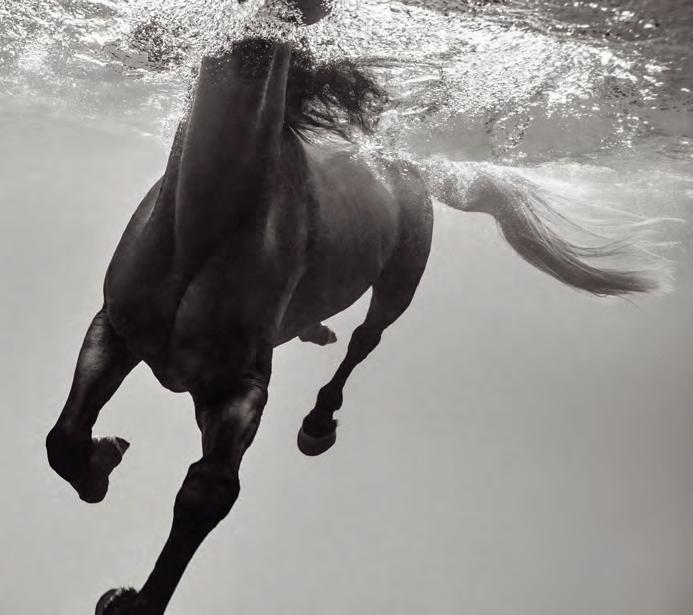
Photographer Drew Doggett spent a decade travelling the globe shooting the remarkable images in his new book, which sets out to capture the grace, power and timeless beauty of horses
“Horses effortlessly possess many qualities I seek in subjects,” says acclaimed photographer Drew Doggett, who turns his hand to a wide range of wildlife and ethnographic themes in his work but returns repeatedly to the visual study of horses. “They transcend time, place and boundaries. More than any other animal, they embody a mythological and symbolic presence, representing strength, resilience, courage and timeless beauty.”
The latest expression of Doggett’s ongoing fascination with his equine subjects is the book Untamed Spirits, a collection of images that captures the free-wheeling resilience of wild horses in rugged locations from Iceland to Nova Scotia, as well as the more restrained strength and discipline of polo ponies and dressage horses in the USA. Doggett’s background in New York fashion photography, including observing and working with portrait photographers such as Mark Seliger and Annie Leibovitz, has informed his approach to capturing these animals in their full, multifaceted glory. “The real test,” he says, “is distilling the essence of a horse’s spirit through my fashion-inspired, minimalist approach; it’s this process that makes each image uniquely mine.”
Doggett is currently working on his next equine photo series, called Icons, and also undertakes commissions from private clients to photograph their horses in his signature style. Of his latest book, he says, “Untamed Spirits was a way to unite over a decade of equestrian photography from around the world and share the themes I’ve found across all the horses I’ve photographed. Horses’ beauty, innate sense of wildness and enduring legacy as symbols of strength and grace keep me fascinated.”
“Untamed Spirits: Horses from Around the World” by Drew Doggett, is out now; drewdoggett.com



Previous pages, left: Doggett captured a magnificent series of images depicting horses swimming – which he titled Equus: Underwater Rhythm – on the island of Tobago in the West Indies
Previous pages, right: the resilient wild horses that survive on Sable Island in Nova Scotia, Canada, are the only full-time terrestrial inhabitants of this inhospitable but ruggedly beautiful location
Opposite: the graceful white horses that are native to the marshy Camargue region in the south of France are believed to be one of the oldest equine breeds on Earth
Above: the images in the book’s fourth chapter, Equus: Light & Form, highlight extraordinary, almost sculptural equine characteristics, like the immaculately braided mane of this dressage horse from Florida, USA

Above: “While my affinity for horses began as a kid, it wasn’t until my work on Sable Island that my love affair began,” says Doggett of the stunning yet inhospitable island, a thin crescent of shifting sands just southeast of Halifax, Nova Scotia. “I remember being instantly captivated by the story of the [wild] horses there, who had survived in this place against all odds.”

Singer is not sponsored, associated, approved, endorsed nor, in any way, affiliated with Porsche Cars North America, Inc., or Dr. Ing. h.c. F. Porsche, AG. Dr. Ing. h.c. F. Porsche AG is the owner of numerous trademarks, both registered and unregistered, including, without limitation, the Porsche Crest®, Porsche®, and the model numbers and names and the distinctive shapes of the Porsche automobiles, such as the federally registered 911 automobile. Any mention of Porsche Cars North America, Inc., or Dr. Ing. h.c. F. Porsche, AG. trademarked names or other marks is for purpose of reference only.

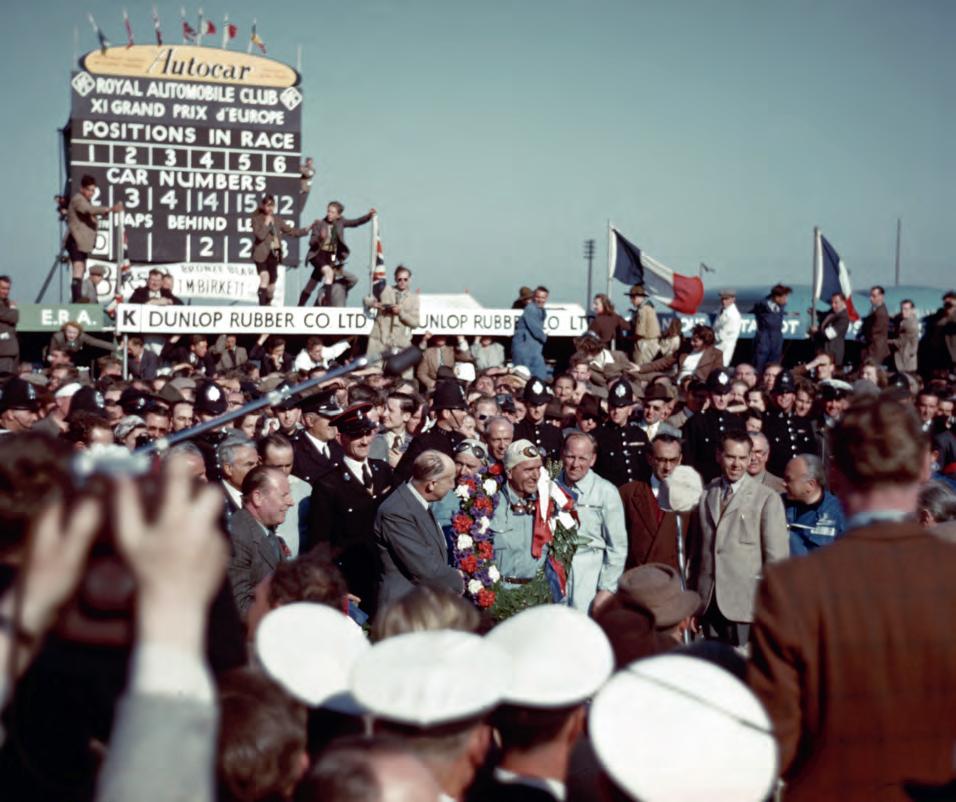
The F1 Drivers’ World Championship turns 75 in 2025. As Goodwood Festival of Speed prepares to celebrate this landmark, Damien Smith and Rob Widdows asked a stellar line-up of motorsport legends to recall some of the significant events that have shaped Formula 1
F1 has evolved almost beyond recognition since 13 May 1950, when the first World Championshipcounting Grand Prix was held at Silverstone in front of a large and enthusiastic crowd that included King George VI, his wife Queen Elizabeth, and Princess Margaret. The royal party bore witness to a display of total domination by the factory Alfa Romeo team, as Giuseppe “Nino” Farina was crowned the first winner of the new era. The Italian would go on to become the first world champion too.
In the seven and a half decades since, the size, shape and scope of F1 has expanded beyond the wildest imagination of anyone among the throng at Silverstone that historic day in 1950. The unremitting march of technical innovation, an explosion in commercial investment and a saturation in global interest has elevated F1 into a self-sustaining multibillion dollar industry. And yet somehow its essence remains unblemished: it’s still a sport for daring racing drivers going wheel to wheel in machines devised and built by the most brilliant minds. This is an arena for gladiators who live on the edge, in a realm of speed the rest of us can only dream about.
The 75th anniversary of the F1 World Championship is the inspiration behind Goodwood’s biggest ever celebration, at this year’s Festival of Speed presented by Mastercard, on 10-13 July. At least eight World Champions, including Nigel Mansell, Alain Prost and Mario Andretti, will be among the drivers attending, along with other important figures from the sport’s history, current teams and drivers, and more than 100 significant F1 cars. Although the focus will be on the World Championship from 1950 onwards, F1’s origins in pre-war Grand Prix racing will also be celebrated. With support from Formula 1 itself, it promises to be quite an occasion.
Ahead of the F1 75 celebrations at Goodwood, we canvassed the great and good of motorsport for the pivotal racing moments that they’ll never forget, in an attempt to distil that essence across the decades. As their snapshots highlight, in the fast-moving world of F1, everything has changed, while equally, nothing really has.
This year’s Goodwood Festival of Speed will celebrate 75 years of the F1 World Championship, 10-13 July 2025

Ferrari ace recovers from poor qualifying result, making 10 passes for a classic win
“I did 199 races and there were maybe three or four where I touched perfection. This was one of them. I told my team after qualifying 13th: ‘I am going to win this race.’ I don’t know what I bet, but I said, ‘I am going to win, easy – if I don’t crash on the first lap.’ I knew.”
A chance conversation stops the future triple World Champion from signing for Ferrari in 1968
“Many people don’t know that I was close to joining Ferrari. Enzo had offered me the drive but he never told me he’d already been talking to Jacky Ickx, and I didn’t like that. Jacky told me when we were at an F2 race in Italy so that wasn’t a good start, and if it was going to be like that with Ferrari I decided I didn’t want to sign a contract. Enzo was furious and bore that grudge for many years.”
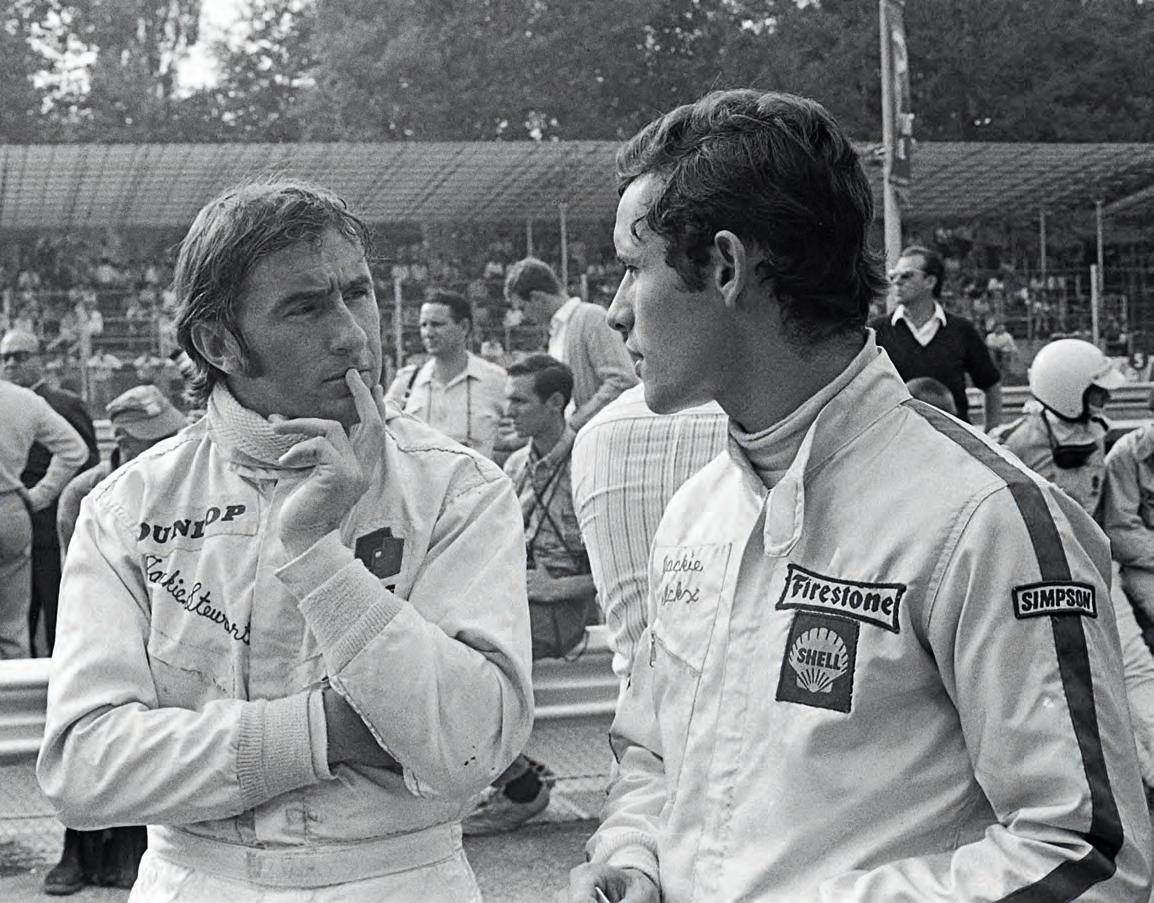
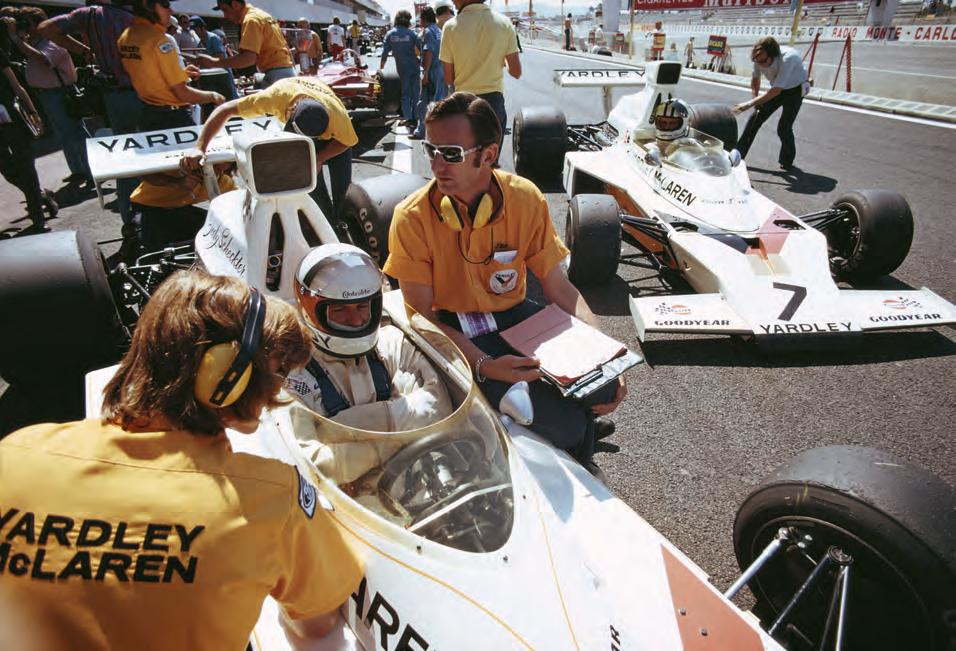
1993 South African Grand Prix
How a dog came between two Ferrari teammates
“In F1 it’s important to establish yourself as number one in the team. At Ferrari, with Jean Alesi, I wanted the spare car, more money, a better contract, and this way you destroy your teammate already. I wanted the bigger sleeping space in the motor home, and Jean gets the smaller one. At our first race, he’s not happy. He has brought his dog and he puts it in my bed, and it wants to bite me. So I took the smaller space, after all. After three races we became good friends, and shared the spare car. Jean was very quick and a lovely man.”
1972 Italian Grand Prix
Brazilian becomes the then youngest F1 World Champion, in the iconic Lotus 72
“Some of my best moments were working with Colin Chapman at Lotus. He was a genius, we had a very good relationship, and the Lotus 72 was the best Formula 1 car I ever drove. I could talk to that car, it was so responsive, and Colin understood so well what I wanted. I became the youngest ever World Champion with that car in 1972. And it happened at Monza.”
SCHECKTER
1973 French Grand Prix
Rookie South African qualifies on front row, leads, then clashes with the World Champion
“I’ve got a picture of myself on the front row with Jackie Stewart and Emerson Fittipaldi. My third F1 race – quite impressive even by today’s standards. In the race, Emerson dived and we collided. Afterwards he shouted at me. I said, ‘If it happens again I’ll do the same,’ and he walked off.”
1990 United States Grand Prix
Alesi leads first 34 laps for lowly Tyrrell, then relishes a (losing) battle with Ayrton Senna
“It was a surprise for everyone, including me. When I turned in for the first corner in P1 I was thinking about my friends watching the race on TV. When Senna came, I knew I had no chance, but I said OK, let’s try to have a good time with him – and that’s what I did.”
One of the first F1 press officers on life with Rosberg, Piquet and Mansell
“It was so completely different back then, no internet or mobiles or social media, and there was no way that drivers like Keke Rosberg or Nelson Piquet would be told what to say, or not to say, to the media. We didn’t record every interview, like today; there was mutual trust between me and the journalists. I did press releases on a portable typewriter, in a tiny room in the back of the truck. Our sponsor Canon gave me a coffee machine, and next door to me a mechanic would be dismantling a gearbox. I’m not saying they were the good old days – it was just so different. I still love the sport, and watch the racing today.”
“Wattie” wins for the first time in five years, in a landmark for McLaren and F1
“Winning the British GP in 1981 was a great Formula 1 day for me and a watershed moment for the team. It was the first win for a carbon-fibre F1 car, and the fulfilment of Ron Dennis’s vision and John Barnard’s innovative design work on the McLaren MP4/1. They laid the foundations of McLaren’s dominance and would change the way F1 cars were built. Winning at Silverstone that summer remains a special memory for me.”
The Italian joins Brabham and begins driving for F1’s greatest influencer
“Bernie Ecclestone is one of the most important people in the history of Formula 1 and in my career as a driver. He advised Frank Williams to take me into the Williams team at the end of 1987 and he gave me some of my best years with Brabham. He was a racer, a fighter, he had great charisma, he protected the sport, and the drivers, from too much interference from the FIA, the governing body. He left us to race, but now there are too many rules, too many penalties, and the drivers are afraid to speak freely. This is not good for the show. So, for me, I have respect for Bernie and for all the clever people who made World Championships for Brabham when I was there.”
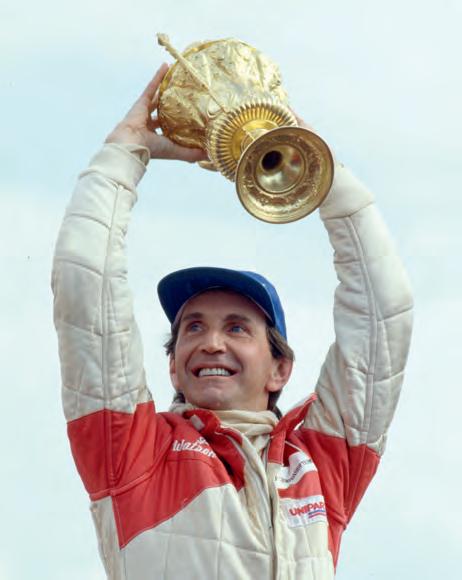




NATALIE PINKHAM
Do you remember the first time? Sky F1’s presenter can never forget it
“This was my first-ever F1 race, with BBC Radio 5 Live. I felt massively overwhelmed. It’s like a sensory overload when you walk into the paddock for the first time. The great Michael Schumacher failed to finish and I had my producer in my ear saying to me, ‘Go and interview Michael Schumacher.’ So I tried to muscle my way into the back of the garage. I had the guy in my ear saying, ‘We’re going live in five-four-three, and on three I just grabbed Michael’s arm, and I started squeezing. I didn’t even realise I’d done it, it was an involuntary reaction, just a pure moment of panic. And Michael very slowly looked down at his arm and back up at me, as if to say, ‘What are you doing touching me?’ And I said, ‘Sorry, I’m just very nervous.’ And actually, he was really lovely, and he explained to me what had happened in his race. I will never forget that moment – a baptism of fire!”
Genius technical director recalls his first Ferrari glory with Michael Schumacher
“Everyone wants to go to Ferrari. I wanted to experience a new culture, a new country, to work for the most iconic team in F1 with Michael Schumacher and Jean Todt. I did a three-year deal and stayed for 10 years, one of the most rewarding times of my career. To pick a moment, it would be the first race we won together, the Monaco Grand Prix in ’97. Seeing the tifosi (supporters) on the hills overlooking the track, their joy and excitement made me realise what Ferrari was all about. The church bells are rung in Maranello when you win, and going through Bologna airport, guys sweeping the floor would chastise or congratulate me depending on the results. That never happened with any other team.”
2025 Miami Grand Prix
McLaren’s long-time coordinator sees modern parallels to Prost vs Senna
“This year McLaren has a tricky situation with its two drivers competing for the title with a car that is clearly the best. I looked after Senna and Prost when I was at McLaren, and team-mates fighting for a championship can become a problem for a team. Both Lando Norris and Oscar Piastri are fast, but Piastri makes very few mistakes. In Miami, Norris should have won but I think he lost it in the first corner. Later in the year this will get interesting.”
Drafted into Team Lotus to replace Jim Clark – a brutal start to a colourful F1 life
“Celebrating 75 years, we should remember the Concorde Agreement [the first of which was signed in 1981], which brought us all together. It allowed Bernie Ecclestone commercial control, and later the sale to Liberty Media, who have in turn made F1 a global sport at the level it is today. Importantly, F1 has also become safer, saving drivers’ lives; that’s another element of how the sport has changed over time. I was lucky enough to be one of the first men to drive Colin Chapman’s Lotus 49, one of the great Grand Prix cars in the history of Formula 1, and the first to use wings. My first race with that car was at Monaco in ’68, drafted into the team following the tragic death of Jim Clark.”

The new Pilot’s Watch Performance Chronograph 41 is proof that performance and elegance are not mutually exclusive. The chronograph, featuring the IWC 69385 Manufacture calibre with a ceramic bezel and tachymeter scale, is now available for the first time in an 18-carat 5N gold case. The black lacquer dial is the end-product of a highly complex manufacturing process, while the appliqués are hand-set and filled with Super-LumiNova ®. Ten-bar water resistance and a black rubber strap with the EasX-CHANGE® system ensure maximum versatility.
Engineered.
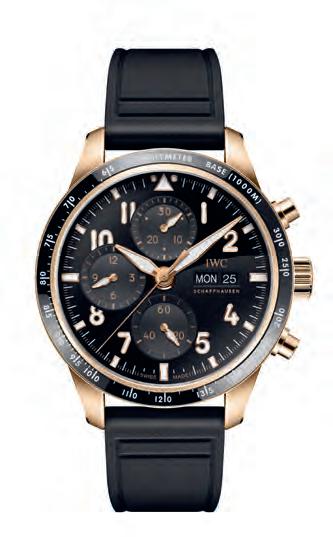

Vindication for a genius designer as McLaren wins its first titles under Ron Dennis
“The financial support I received at McLaren allowed me to be creative, building the first carbon-fibre chassis and introducing the ‘coke bottle’ shape aerodynamic bodywork. This led to World Championship success, starting with Niki Lauda’s third title, clinched at Estoril in 1984. Later, at Ferrari, I was able to be both innovative and creative with the first semi-automatic gearbox. Today’s prescriptive rules don’t allow engineers to be as creative.”
An F1 powerhouse is formed as a young engineer takes a chance on a maverick
“It was a big decision to join Williams but I liked Frank’s energy and enthusiasm and we set up Williams Grand Prix Engineering. I was insistent on having ‘engineering’ in the name. Frank stayed on the business side and left the engineering and manufacturing to me. That’s probably why we managed to work successfully together for the next 37 years. If we ever argued, it lasted 10 minutes and then we just got on with the job.”
A teenage Max Verstappen walks on water to charge from P14 to P3 in the last 16 laps
“There was a lot of hype surrounding Max Verstappen before he entered F1, which didn’t entirely make sense to me at the time. That all changed at the 2016 Brazilian Grand Prix. In the rain, Max demonstrated an extraordinary level of skill and control beyond comprehension, and it became clear why so many people saw him as a generational talent.”
Three-way dead heat in qualifying, Schumacher’s “professional foul” decides the title “I think the Jerez 1997 weekend sums up the best of F1 for me. It had drama, controversy, high tension and high stakes, several drivers in the storyline, an unprecedented jaw-dropping moment in qualifying, and the glory of a newly crowned World Champion, Jacques Villeneuve, as well as a first-time race winner, Mika Häkkinen, who went on to become a great himself.”



Abiographer of Edward VII tells the story of someone meeting him for the first time in the 1900s, only to find the monarch much smaller than he’d imagined – a sign, surely, of how this intriguing royal had always projected a larger-thanlife quality. In official paintings he looks magnificent: witness the state portrait (pictured opposite) by Sir Luke Fildes, currently on display in The Edwardians: Age of Elegance at the King’s Gallery, Buckingham Palace, which depicts the King-Emperor in full regalia, wearing Parliamentary Robes over Field-Marshal’s uniform. Photographed off-duty and dressed for leisure, meanwhile – and this was an era when the well-off really did dress up for leisure – he looks sociable, dapper, always appropriately turned out.
The clothes don’t make the man, but they certainly proclaimed every activity for a prince who, in his long years waiting in the wings to inherit the throne, lived a life of enforced idleness. Nonetheless, he applied himself to his duties with great energy, his calendar replete with what we would now call rehearsed pleasures: kilted for Balmoral; in tweeds for a shoot on his Sandringham Estate; wearing naval gear for Cowes. Young Bertie (as Prince Albert Edward was known by his family) set fashions that were widely followed, making him a pivotal figure in the history of men’s style – smart but, where possible, steering towards a greater ease. Thus, lounge suits rather than frock coats, black tie rather than tails; while at Goodwood, where he attended Raceweek more than 50 times, his adoption of linen suits and Panama hats (rather than toppers) made these acceptable attire.
Edward visited Goodwood regularly from the 1860s until his death, both as prince and king, usually accompanied by his elegant wife Alexandra. And if the King’s Gallery exhibition evokes court life during this period – tiaras, bejewelled swords presented by maharajas, family miniatures in Fabergé frames – at Goodwood we see the couple in a more relaxed mode, heading off to the races or enjoying country house life, as captured in the group photographs of guests which Edward always enjoyed arranging. That said, a plaque in Goodwood’s tapestry drawing room records the many meetings of the Privy Council that took place in the House once he became king,
an indicator of the way fashionable, high-society life still overlapped with government circles in the early 20th century.
As guests go, Edward was gracious, but certainly influential. It was at his behest that the décor of Goodwood House’s Egyptian dining room was toned down into something more conventionally Georgian, while a folly was knocked down because he thought it spoiled the view. He was a muchloved presence at Goodwood, however. “Very genial, as always,” reported the local paper when he arrived at Chichester by train one year, while his presence attracted publicity and increased attendance at race meetings, where he was always enthusiastically cheered. But he doesn’t look like someone you’d trifle with either, also having an innate dignity that in later life, along with exquisite tailoring, allowed him to carry off rather well the unmistakable paunch of a man who clearly loved his fine food and wine.
This was an era, for the wealthy, of tables and buffets groaning with rich dishes: quails stuffed with foie gras, poor little ortolans fattened up and eaten whole, pheasant laced with truffle, along with turtle soup to start and rum baba for pudding, plus plates of cold chicken or lobster sandwiches on hand later, should anyone feel peckish between meals. Edward certainly didn’t believe in stinting himself, and his regular stays at Goodwood House are a tribute not just to his lifelong love of racing, but also to the quality of the hospitality offered by the 6th and 7th Dukes of Richmond – both hosts on a grand scale.
Even when he was king, Edward spent a good quarter of every year abroad. He sojourned in Paris, which he loved, and the Riviera – later favouring Biarritz because “you meet too many princes” in Nice or Cannes, which meant endless social calls. He cruised around the Mediterranean on his yacht or “took the cure” in the fashionable continental spa towns of the Belle Époque (which, for Edward, needn’t involve any let-up on his epicurean pleasures). When in Britain, he simply wouldn’t stay anywhere if the food and the company were not up to scratch, delighting in the lavish hospitality of friends such as Baron Ferdinand de Rothschild at Waddesdon Manor, and the Gordon Lennox family at Goodwood.
Over the centuries, Goodwood House has welcomed a who’s who of dignitaries, but one of the Estate’s most distinguished – and frequent –guests was King Edward VII. A monarch whose influence on 20th-century Britain is sometimes overlooked, Queen Victoria’s eldest son was a passionate lover of horseracing, country pursuits and, as James Collard discovers, much more besides
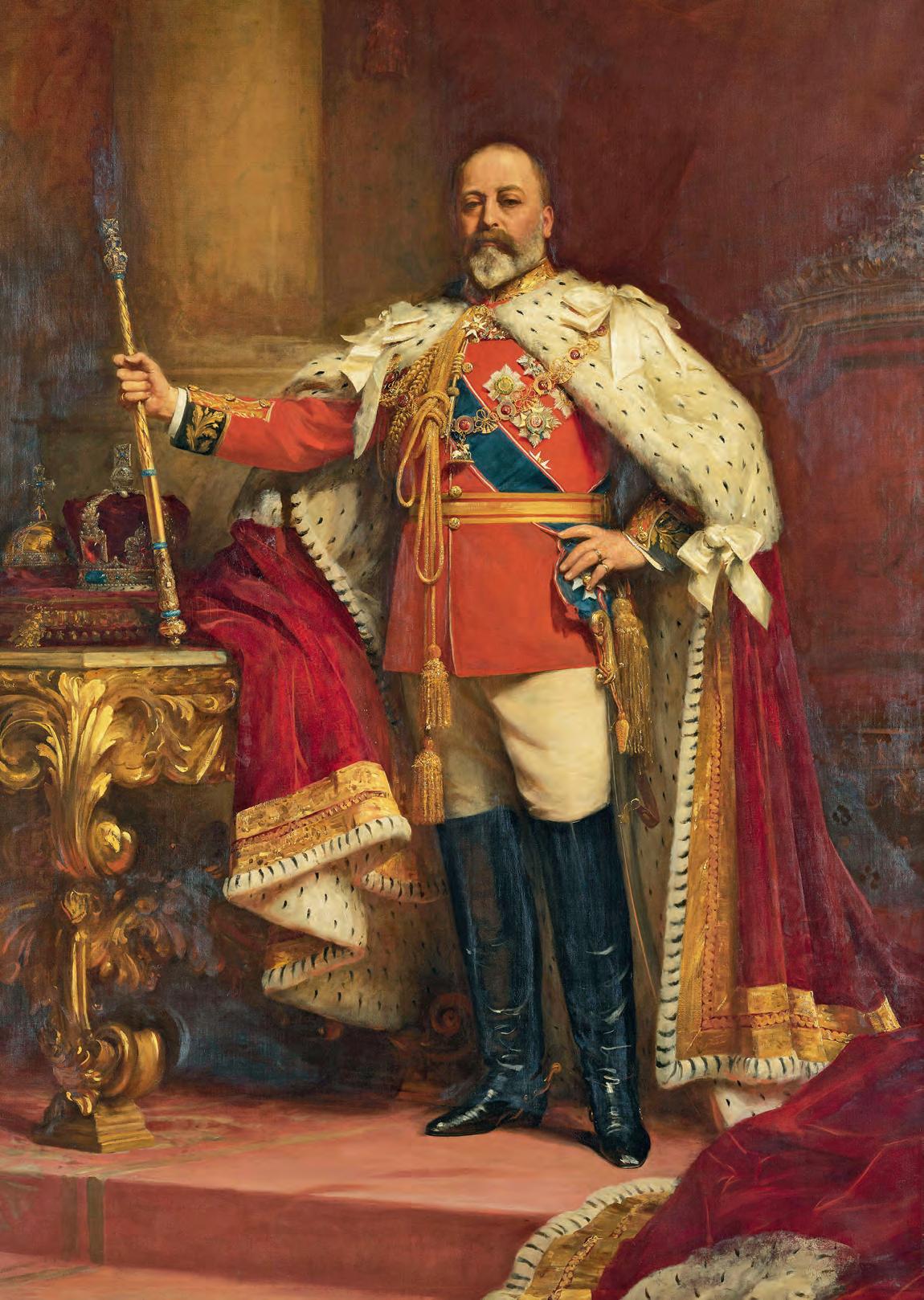
In her memoirs, written in the 1930s, the 7th Duke’s daughter, Lady Muriel Beckwith, recalled the excitement caused by the King’s visit one year. One memorable highlight was the delivery of live turtles, “as marvellous as prehistoric animals”, but destined for the pot “presided over by M. Jean-Jacques”, the family nickname for Monsieur Rousseau, the excellent French chef employed in the kitchens. What’s best, the King asked young Muriel, “turtles or toffee?” – before scandalising her by taking two toffees rather than one when she offered them. But, writing decades later during the brief reign of his grandson, Edward VIII, she described the elder monarch’s “extraordinary presence and dignity”.
Lady Muriel also recalled the mood of “flirtatiousness” that characterised teatimes at these “Friday to Mondays”, as country house weekends were then known. Much has been written about Edwardian upper-class mores and the discreet adultery that often went on behind a veneer of respectability. In town, the afternoon was the time for dalliance, with a compliant husband perhaps politely heading out to his club so his
Edward VII was “a kind of John Bull figure”, in the words of one biographer, with what was seen as his very English love of sport, good food and a good time
wife could be visited by her lover. Fashionable women changed their attire four times daily, but one reason for the vogueishness of the “tea gown”, a much looser garment than most daywear, was that women didn’t wear corsets underneath them, which meant they could easily take them off or put them on without the aid of a dresser.
Much has been written, too, about Edward’s womanising. Only this year, the Daily Mail ran a piece about him, headlined “The Royal who bedded over 100 women”, referring to his “numerous romps”. He was certainly highly sexed, especially as a young man, much to the disapproval of Victoria and Albert. Edward had endured a stifling childhood at the hands of his parents – who, whatever their public virtues, were almost entirely lacking in emotional intelligence or parenting skills – and a series of badly chosen, equally unimaginative tutors. He was kept separate from other boys, largely to prevent him hearing what Prince Albert called “bawdy talk”, the Prince Consort living in dread of his son inheriting George III’s madness or the licentiousness for which Edward’s uncles had been renowned.
In seeking to head off the latter, Albert was unsuccessful. On the news that his 19-year-old son, briefly serving with a Guards regiment, had lost his virginity to a young Irishwoman, Albert was so prostrated by moral outrage that after much sermonising – about a lapse that many people might have deemed understandable – he was taken ill with typhoid and died. This was a loss for which the grieving Queen always blamed Edward, saying afterwards that she couldn’t look at her son without feeling a shudder. So this wayward young prince was then speedily married off to Alexandra,
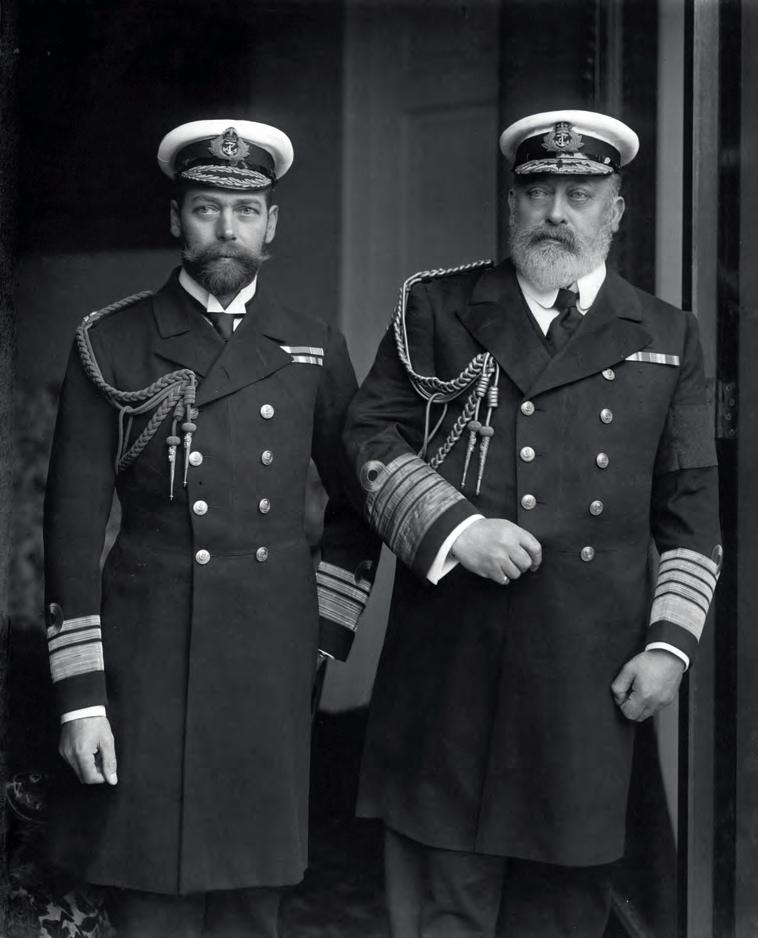

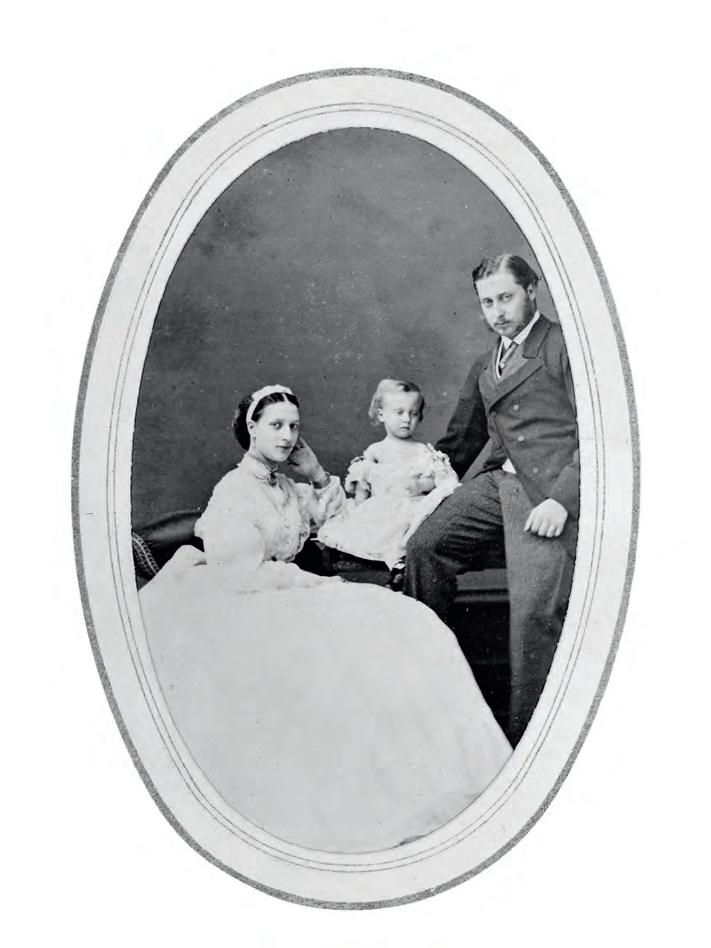
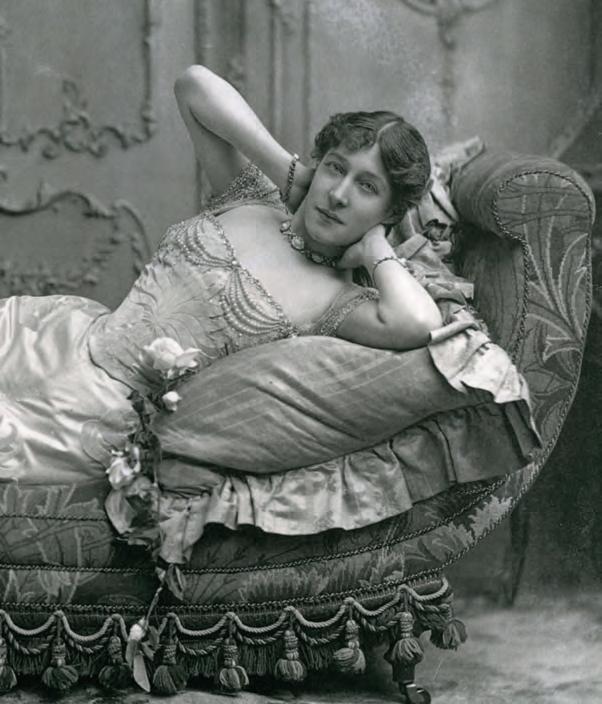
a beautiful Danish princess, in the hope that she would bring him round to a more wholesome way of living. Again, this failed, and while Edward always loved Alix in his own way, his womanising didn’t cease with marriage. Far from it. And one way of understanding his approach to both pleasure in general and sex in particular might be as a refusal to toe the line and swallow the hypocrisy and cod pieties of the Victorian era. Throughout his life, Edward remained a popular prince and monarch. He was “a kind of John Bull figure”, in the words of one biographer, with what was seen as his very English love of sport, good food and a good time. But periodically he would become embroiled in scandal, when a court case – or an angry, less-than-compliant husband – pulled back the curtain on a life lived according to something like the free-and-easy spirit of the earlier Regency era. This was, of course, very much at odds both with the oppressive mood of Victoria’s joyless, stuffy court and the values of Britain’s church-going middle classes, which we would see today as being typically Victorian.
Edward’s life also often feels at odds with the spirit of our own times, with his plutocratic appetite for pleasure, a notion of sport that might mean shooting several thousand game birds in a day, and an approach to women that for many years was “predatory”, to use the word deployed by historian Jane Ridley, his best, most recent and sympathetic biographer. “As a young man, Edward was not always likeable,” she writes, recalling finding it “hard to warm to a prince who blatantly cheated on his wife and ruthlessly discarded his mistresses”. Yet in middle age, she argues, “he grew up” and enjoyed long, loyal (if not precisely faithful) relationships with a

series of mistresses who were as intelligent and interesting as they were attractive. “These late-life affairs mattered to him – he cared more.”
And these were impressive women. Lillie Langtry possessed a PreRaphaelite beauty and was initially taken up by artists, rapidly followed by high society and, finally, the Prince of Wales. Rather like a modern influencer, she had an eye for publicity and a great head for business, becoming a successful actress after finally parting with Edward. Her lovely face was used to sell everything from Pear’s soap to “Brown’s Iron Bitters”. In later life, she became a successful owner of racehorses, and enjoyed swapping racing gossip with Edward, who, during Raceweek, would always pop over from Goodwood to visit her at her lodgings nearby.
Next there was Daisy Greville, Countess of Warwick – a socialite and early “champagne socialist” who championed radical causes and would later draw big crowds when she spoke at left-wing meetings, wearing pearls and arriving by chauffeur-driven car. Once, when Edward was staying with her at Warwick Castle, Daisy took him to meet Joseph Arch, the Warwickshire-born agricultural labourer turned trade union activist and radical MP – an encounter that was not, apparently, a meeting of minds.
After Daisy came Alice Keppel, who just happens to be the greatgrandmother of Queen Camilla, married to Edward’s great-great-grandson, Charles III. A brilliant hostess and woman of great charm, Mrs Keppel was “almost always included in the Goodwood house party”, as Lady Muriel remembered, and had “a pleasant word for everyone”, including the servants, who were the hardworking support act for all that late-Victorian and Edwardian glamour and ease. “She was loved by all who knew her.”
Along with these relationships, which Ridley suggests might have become increasingly chaste as that extraordinary libido finally began to fade, Edward also enjoyed long-standing, platonic and loyal friendships with some highly intelligent, powerful women. These included the heiress
and philanthropist Agnes Cayzer, and Empress Eugenie, the indomitable widow of Napoleon III, who, long exiled in England, effectively became a kind of supernumerary member of the royal family.
For the most part, as Princess of Wales and later Queen, Alix put up with Edward’s philandering gracefully. A lively young bride, her growing deafness later made her retreat increasingly from social life. While Edward savoured hospitality on a grand scale, Alix enjoyed family life and her reunions each summer in Denmark with her sister Dagmar, aka Maria Feodorovna of Russia, who visited Goodwood in the 1870s with her husband, the Tsarevich, later Alexander III. The sisters had always been almost identical; likewise, their sons, George (later George V) and Nicholas (later Nicholas II), who got to know each other at these informal gatherings. Near doubles, their destinies would be very different.
On Edward’s accession at the age of 59, when a new reign seemed to chime with the optimistic mood of a new century, old courtiers were shocked by the cosmopolitan, socially mixed and, above all else, thoroughly jolly nature of the new court, as the late Queen’s near-silent dinners were replaced by the sounds of witty conversation and laughter. And for all its injustices and inequalities, the Edwardian era retains its allure in the popular imagination – from Upstairs, Downstairs to Downton Abbey – while in hindsight it can feel like a brief burst of sunlight between dour late Victoriana and the First World War. To look at photographs of Edward and Alix at Goodwood at this time is to see high society at its most glamorous – the King looking affable but regal on his way to the races (now complete with top hat, we note), the Queen and her ladies all in white – elegant figures from a world on the very edge of change.
“The Edwardians: Age of Elegance” is at The King’s Gallery, Buckingham Palace, until 23 November 2025

Step into an all-inclusive ultra luxury experience that is Unrivalled at Sea™. Explore more than 550 destinations around the world while enjoying the unrivalled space, elegance, and comfort of The World’s Most Luxurious Fleet® We’ll tend to every detail of your journey from start to finish, so you can be pampered by the warm, Heartfelt Hospitality™ delivered by our incredible crew who not only care for you, but about you.
Nobody Does It Better than Regent Seven Seas Cruises®


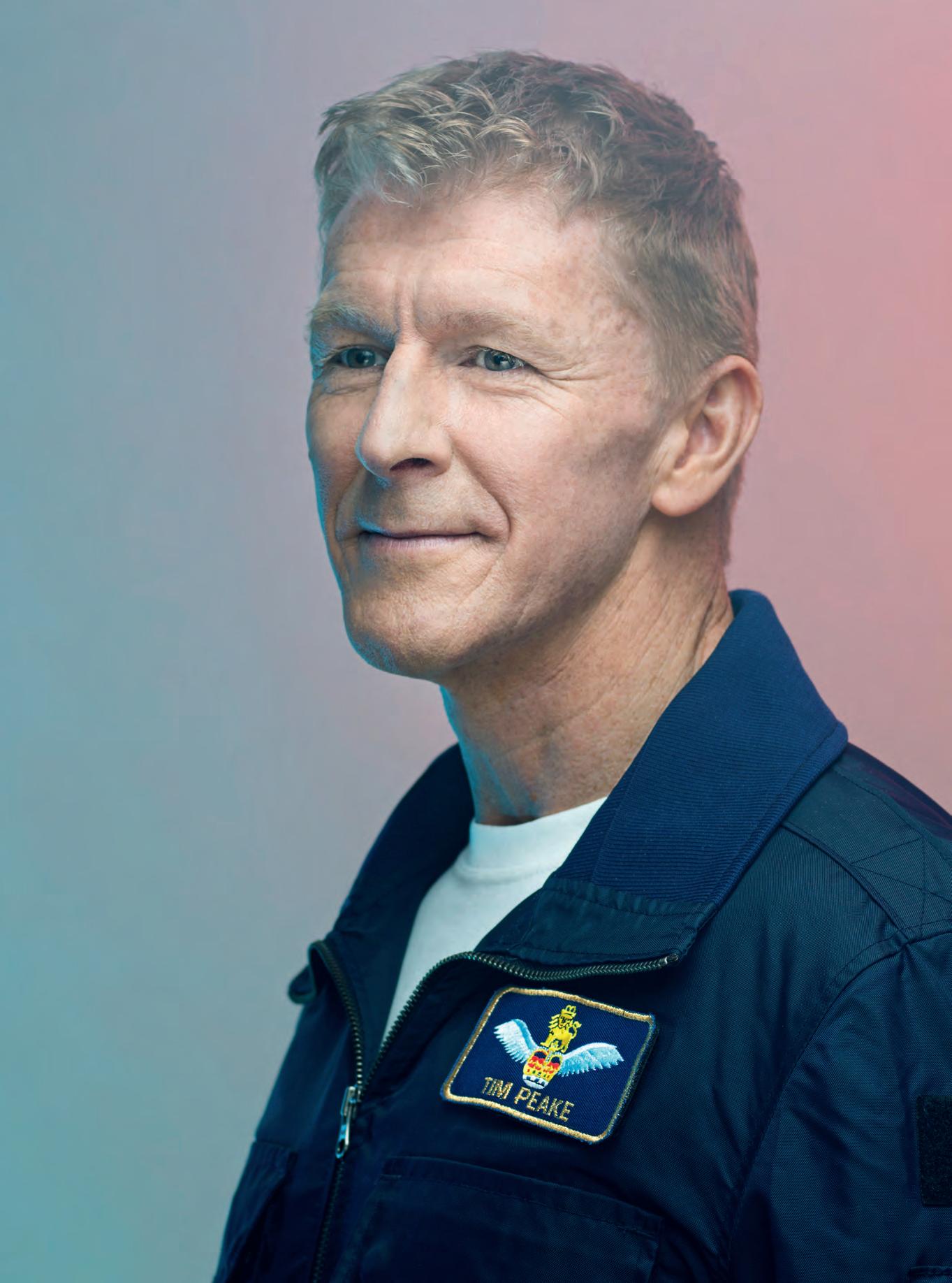



n the acknowledgements section of his book, Ask an Astronaut: My Guide to Life in Space, Tim Peake thanks his wife, Rebecca, for “her endless support and encouragement during what has been a much bigger undertaking than I anticipated”. How did someone with his intelligence underestimate the sheer magnitude of going into space? “Well,” he says cheerfully, speaking via Zoom from his home office near Chichester, “when we started the journey, I was a military test pilot – nobody knew who I was, and actually it was important for that to be the case. When I applied to become an astronaut, it was very much through that professional lens; it was an incredible opportunity to use my skill set in another domain. I didn’t go into it thinking, ‘You’re going to become very well known, you’re going to be writing books [11 and counting] and doing live tours up and down the country.’”
A decade after becoming the first British astronaut to visit the International Space Station (ISS), Peake has joined the likes of Neil Armstrong and Buzz Aldrin to become one of the foremost spacemen in the minds of the British public. During his six-month stint on the ISS – during which he conducted more than 250 scientific experiments, research, and essential space station maintenance – his weekly broadcasts were received by approximately two million young people as part of the UK Space Agency’s £3 million educational outreach programme. He has more than 400,000 followers on Instagram, and after 2024’s sell-out tour, his new show, Astronauts: The Quest to Explore Space, will see him doing 31 appearances in September and October 2025. It’s fair to say that he has become very well known – the one part of his role he wasn’t fully prepared for.
“As an astronaut, you’re in an incredibly privileged position, so there’s huge responsibility,” Peake says of learning to embrace his newfound celebrity. “If someone had been to space and then hid themselves away,
didn’t speak about their experience and didn’t try to inspire a new generation of engineers and scientists, I think it would be an incredible waste of resources, and a real shame. It’s part of the job.”
There’s an art to recounting the kind of cosmic tales that most of us can only dream of, without coming across as conceited, and Peake – who, it seems, can still hardly believe his luck – has very much mastered it. He’s quick to link his personal anecdotes of time spent in space to the vital importance of STEM (Science, Technology, Engineering, Mathematics) knowledge and education, and, for the most part, he’d sooner discuss the future of space exploration than his own extensive achievements. Hence his 2017 book, Ask An Astronaut, in which he attempted to answer every question one might ask of a person who’s lived in space for half a year. “I wrote that book thinking, ‘Well, now nobody will need to ask me any more questions,’” he grins. “It’s all there.”
Aware that people certainly do still want to ask him questions, Peake typically ends his live shows with a friendly Q&A. For those who don’t know, his first meal aboard the ISS was a bacon sandwich and a cup of tea (courtesy of Heston Blumenthal, no less). During his time in space, he also famously “ran the London Marathon” on a treadmill in the ISS at the same time as the April 2016 event (with a time of three hours and 35 minutes). And when asked what the hardest part of his astronaut training was, he always says that it was learning Russian – a requisite for astronauts, as it’s one of the two primary languages used on the ISS.
When it comes to sating others’ curiosity, does he ever get tired of repeatedly covering the same ground? “The fascinating thing about space is, there’s always so much new happening,” says Peake, with trademark enthusiasm. “Of course, the big news is that we’re preparing to have boots back on the Moon in 2027, which is suddenly just around the corner. A lot of people weren’t alive when Eugene Cernan and Harrison Schmitt walked on the Moon in 1972, so to see it again – and in full 4K HD colour – is going to be incredibly significant. It’s been so long, it’ll be like witnessing it for the first time.”
Added to which, he says, “It will be fantastic to have American astronauts Christina Koch and Victor Glover marking the first time that a woman and a person of colour set foot on the Moon. Space is no longer just the domain of white, middle-aged test pilots – of which, admittedly, I am one.”
Indeed, among Peake’s colleagues at the European Space Agency (ESA) is John McFall, a former British Paralympic sprinter and orthopaedic surgeon selected to become the world’s first parastronaut. “He’s an incredible guy,” says Peake, who is an ambassador for charities and organisations that focus on supporting young people, including The King’s Trust and The Scouts, “Hopefully his story will make people think, ‘OK, there’s no reason I can’t go for it too.’ It’s a bold move, and one that’s been embraced by both Space X and NASA, who will have to modify the spacesuits and spacecraft to accommodate prosthetics. It’s a great lesson in how we can make the space environment more accessible to more people.”
All being well, Peake may even go back into space with McFall. He is currently working as a strategic advisor to Axiom Space, the privately funded company building the world’s first commercial space station, designed to replace the ISS, and is ready to come “out of retirement” should his services be required. “I’ve very much got my hand in the air,” he says, hopefully. “There’s a possibility that I’ll be commanding that mission, but it’s up to NASA to confirm the crew.”
This relatively short, commercially sponsored mission would, he says, be particularly fun because his role would be in addition to the ISS’s regular crew, meaning he wouldn’t be required to do much of the space station “housekeeping” such as cargo operations, managing payloads with the robotic arm, and space walks. Instead, he’d be able to dedicate his time to scientific experiments on behalf of the UK Space Agency – something he can, and does (frequently), get very excited about. “We’re just scratching the surface of what space can do for us; it’s going to be incredibly important to our future,” says Peake of the scientific potential of the different atmospheric conditions when we leave Earth. “So we need to embrace it. Sometimes I think all the talk of space debris and pollution detracts from what space can offer. It has the potential to give us permanent, limitless, clean, free energy from solar farms in orbit beaming down microwaves.”

“AS AN ASTRONAUT, YOU’RE IN AN INCREDIBLY PRIVILEGED POSITION, SO THERE’S HUGE RESPONSIBILITY”
He’s also keen to emphasise the potential for medical advances from experimental science in space, where materials and reactions often behave differently. “In microgravity, we have the potential to manufacture human organs: tailor-made hearts, kidneys and livers, for example. Meanwhile, we can make drugs for motor neurone disease, Parkinson’s disease and Huntington’s disease [the protein crystals used to treat these conditions can be harvested more efficiently away from the effects of gravity].”
Then there are the pure technological advances, such as semiconductor chips for computer processing. “We’re making silicon wafers for microprocessors that are 100 times more powerful than anything we can make on Earth,” Peake explains. “And if we can get our AI data centres up into space, we’d stop using up the Earth’s energy and avoid producing the vast amounts of heat that is warming America’s lakes. Get them into space so we can declutter Earth.”
It’s clear from hearing him speak that Peake’s passion and enthusiasm for the sciences goes way beyond his obligations as an ambassador for STEM learning. “Astronauts might be the protagonists but behind the scenes there are thousands of people doing brilliant, exciting jobs within the space industry,” he says, barely pausing for breath. “You’ve got planetary scientists, rover engineers, people designing rocket engines, people experimenting with material science and additive manufacturing. We’ve got young graduates at ESA in Cologne working in a similar capacity to the guys at [aerospace company Lockheed Martin’s development arm] Skunk Works, designing sci-fi-esque lunar habitats. Imagine leaving university and being told, ‘Okay, show me how you’re going to create a building to go on the Moon.’ These are incredible jobs.”
This kind of insight has become an invaluable resource when it comes to FOS Future Lab, the immersive exhibition that takes place as part of Goodwood’s annual Festival of Speed presented by Mastercard, showcasing
“[SPACE] HAS THE POTENTIAL TO GIVE US PERMANENT, LIMITLESS, CLEAN, FREE ENERGY FROM SOLAR FARMS IN ORBIT BEAMING DOWN MICROWAVES”

Official retailer of the world’s most desirable cars and Britain’s leading luxury motor group



A MISSION TO MARS? ABSOLUTELY, HE SAYS. “ONLY IT WOULD HAVE TO HAPPEN BEFORE I’M 63, AND THE CHANCES OF THAT ARE PRETTY SLIM”
bleeding-edge technology in the fields of robotics, mobility and space. For the past three years, Peake has worked closely with curator Lucy Johnston to bring the exhibition to life. Last year, guests could put on a VR headset and speak to an avatar of the astronaut, primed (using a combination of ChatGPT and a selection of his own books) to answer questions about his experience in space. “That was interesting because we were able to see which parts of AI work well, and which parts perhaps don’t work so well,” explains Peake, a regular at Goodwood of late, particularly as he refreshes his Private Pilot’s Licence (PPL). “That’s to say, it’s perfectly good at providing factual information: ‘How far away is Jupiter?’ But it falls short on opinions: ‘What’s the point of colonising Mars?’”
Good question. “I think the message gets a bit blurred,” says Peake. “If you’re talking to NASA or ESA, it’s about research, finding minerals, liquid water and potential life forms that could further our scientific understanding. Whereas if you were to speak with Elon Musk, it’s more about getting humanity onto another planet in order to de-risk our species dying out in the event of a cataclysmic occurrence. And, in fact, Stephen Hawking [with whom Peake spoke during his time on the ISS] was in agreement with that point of view, that we are the only conscious intelligent life form in the universe that has a space programme, so we have a responsibility that perhaps extends beyond our own planet. It might take 50 years, 100 years or 500 years. Who knows?”
Would he put his hand up for a mission to Mars? Absolutely, he says without batting an eyelid. “Only, it would have to happen before I’m 63 [the age limit for ESA astronauts], and the chances of that are pretty slim.” Mars might not be on the cards, but everything we’ve seen suggests that Peake will continue to break new ground, not least by motivating the next generation of scientists and explorers.
Tim Peake is Ambassador for FOS Future Lab 2025, which runs from 10-13 July at Goodwood as part of Festival of Speed 2025

GOODWOOD’S ANNUAL EXHIBITION OF JAW-DROPPING INNOVATION RETURNS THIS JULY
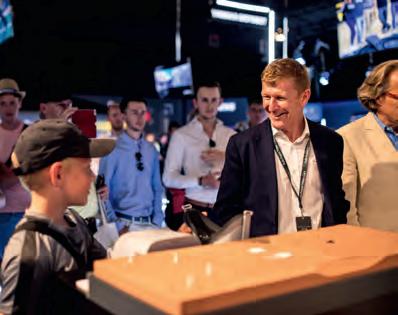
Future Lab is a unique, immersive exhibition campus that spotlights the groundbreaking advances that will shape our future, allowing you to get up close and hands-on with exciting new tech, as well as being among the first to hear about changes coming our way soon. In 2025, Future Lab, exploring the overarching theme “Technology for a better world”, will showcase innovations on land, at sea and in space, as well as in the virtual world.
“Future Lab is an incredible forum in which to learn about the science and technology driving our understanding of the Universe, and it’s brilliant to see Festival of Speed welcoming students as part of its STEM programme,” says Future Lab Ambassador Tim Peake. “I’ve seen firsthand how it inspires thousands of visitors each year. I’m particularly looking forward to exploring the parallels between space and deep sea exploration.”
OUR BIG BLUE
Our knowledge below the ocean surface will shape our future above it. Take a look at some cutting-edge technologies deployed on maritime missions, which could enable humanity to gain unprecedented understanding of our oceans.
NEW INDUSTRIAL
Breakthroughs in the evolution of robotics, automation, AI and beyond are driving fast-paced change across multiple industries, ushering in a new era of human-machine collaboration.
EXPLORING SPATIAL INTELLIGENCE
Discover the latest powerful advances in spatial computing, combining big data visualisation, volumetric modelling, immersive environment creation, and analytical AI tools.
MOBILITY FOR HUMANITY
Smart future mobility solutions are enabling us to better engage with the world around us. Find out how advances in this field could protect people and the natural environment, expanding humanity’s understanding of our planet – and beyond.

The right kit transforms your time outdoors into moments you'll never want to forget. Tried and tested by guides who live for the elements, choosing good-quality kit is an investment in yourself. For yourself.

When Valerie Finnis acquired a Rolleiflex camera in 1950, she set about documenting the upper echelons of gardening culture in post-war Britain. A book bringing together her most memorable images – including portraits of the era’s horticultural greats – offers an evocative record of a bygone age, writes Gill Morgan

Plantswoman, teacher and photographer Valerie Finnis, whose glorious images you see on these pages, was a grand dame of the gardening world. At once a product of her era and social background and an utterly original force of nature, her passion for plants took root in early childhood. Indeed, she could recall the pleasure of seeing a garden full of gentians at the age of just three, and once told the writer Janet Watts that, until she met her husband, it was always “plants before people”. After marriage at 46, she revised her view, announcing that it was really the people who mattered most, after all.
And people there are aplenty in her photographs, some of them as colourful and exotic as the blooms they are tending. Her photographs, brought together by Thames & Hudson in the book Garden People, were produced over four decades, from the 1950s to the 1990s. As Ursula Buchan writes in the book’s introduction, “When Valerie Finnis acquired her first proper camera in 1950, she began a lifelong fascination with capturing on film both the plants she loved and her wide and eclectic circle of horticulturally inclined companions and friends.” Over the years, she built an astonishing collection of around 50,000 images.
An era familiar from a thousand family photograph albums, it also has the feel of another country, a technicolour record of a lost English horticultural world. Portraits include many revered lady gardeners of the day, including Vita Sackville-West, Margery Fish (wife of the then editor of the Daily Mail, Walter Fish, and the person who most popularised the idea of the English cottage garden), socialite and interior designer Nancy Lancaster and, most flamboyantly, Rhoda Birley (pictured right), the glamorous artist/ model/gardener mother of Annabel’s founder Mark Birley.
Finnis herself came from a similar background to the people she photographed. Born in Sussex, her father was a retired naval commander and her mother a skilled gardener. After boarding school (where she was given her own plot to tend and was taught drama by a young teacher and promising actor called Alec Guinness), she became a student at Waterperry Horticultural School for Women, near Oxford, where she made lifelong friends and went on to teach for 28 years (Waterperry is surely worth a book of its own, with its Gardeners’ World meets The Prime of Miss Jean Brodie vibes). There, she propagated thousands of plants a year and built an unrivalled collection of alpines, her favourite variety. As her photography skills grew, her pictures became sought after by publishers and calendar and greetings card companies. She lectured, travelled, was an RHS stalwart, and appeared on the BBC’s early gardening programmes alongside Percy Thrower.

Captured on Finnis’ beloved Rolleiflex camera, the pictures have the heightened colours of film photography of the era and provide a snapshot of the upper echelons of British gardening culture in the post-war years. This was a time when many owners of large houses, left with reduced staff, gamely assumed a more hands-on approach to their mixed borders and clipped box hedges. So we see a cavalcade of pukka chaps, captured in their gardens, often fully suited and booted, accessorised with the odd spade or trowel. The ladies, meanwhile, immaculate in their print dresses, stylish jackets, pressed blouses and occasionally rather magnificent headgear, are seen tending to their borders, up ladders, doing a little watering, often with a trusty dog at their feet.
Finnis is still acknowledged as one of the finest plant photographers there has ever been, her images admired for their natural style and aided no doubt by her plantswoman’s keen eye. But she was also a collector of people, and – helped by her ebullient personality – she charmed her way around the nation’s gardens, capturing a mid-century Arcadia along the way. As the gardening writer Anna Pavord concludes in her closing essay in the book, “Actressy, mischievous, a woman who adored gossip and outrageous hats… she knew most of the people who mattered in the gardening world. She was a great chronicler of her age.”
“Garden People: Valerie Finnis and the Golden Age of Gardening” (Thames & Hudson) is out in paperback now

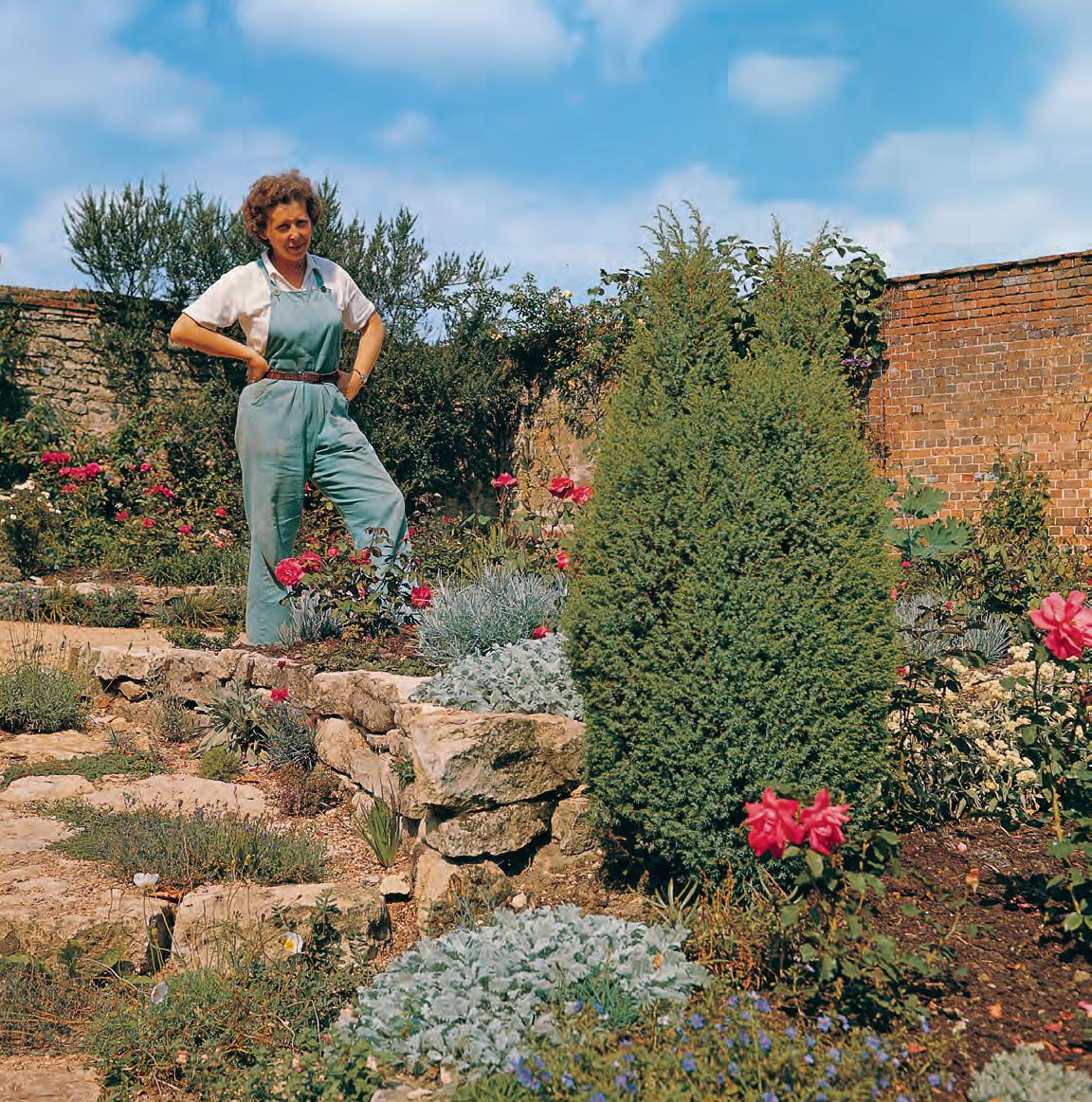

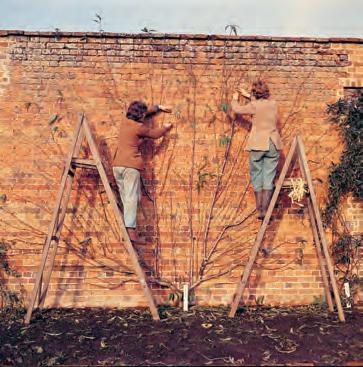

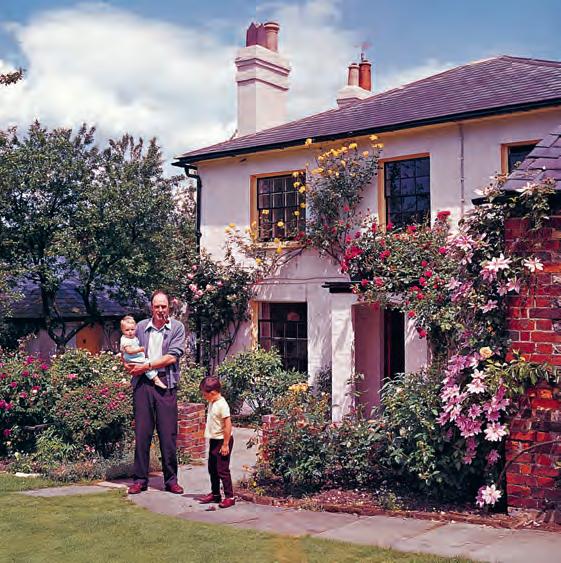

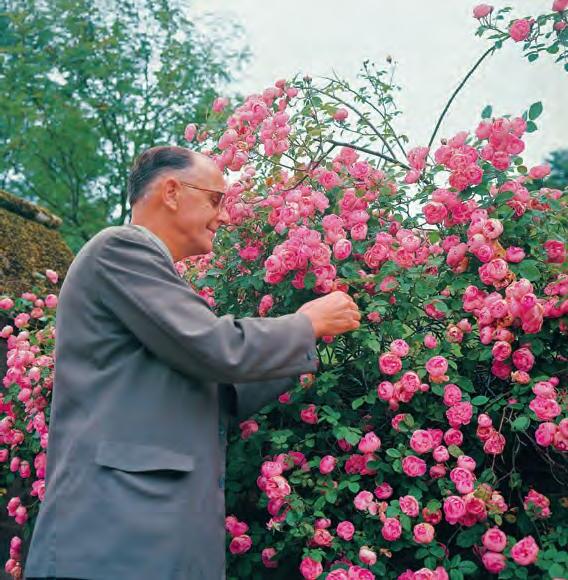



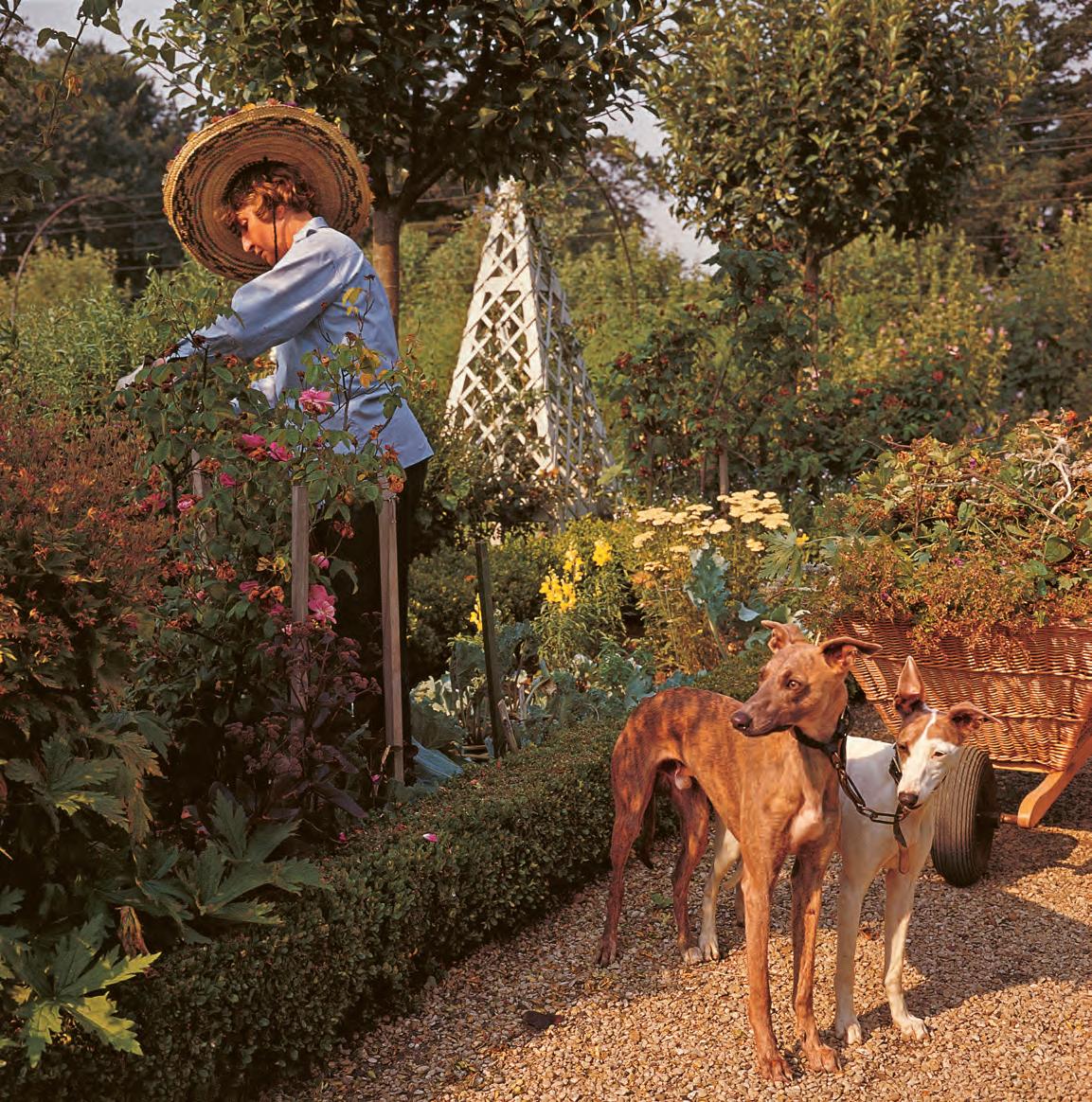

Clockwise from above: Nancy Lancaster, who created the acclaimed garden at Haseley Court in Oxfordshire. Despite being American, she was a supremely successful exponent of the “English Country House Style”; Margery Fish, with her back to the camera, talking to Mr and Mrs Gerard Parker in her garden at East Lambrook Manor in Somerset; nurseryman, author, gardens advisor to the National Trust, and noted authority on Old Roses, Graham Stuart Thomas

Your weekly dose of wonder. Our global specialists are connoisseurs and market experts in over 40 collecting categories. They will be your guides, exploring the significance and journey of an extraordinary work with those who know it best.

Living well, Goodwood-style: vintage looks, ways to wellbeing, news from the farm, and why the garden rose is once again our bloom of choice
Winner of this year’s Goodwood Talent in Fashion Award, British brand RIXO has also been invited to create racing silks for riders in the 2025 Markel Magnolia Cup. As co-founder Orlagh McCloskey tells Kim Parker, a tour of the Goodwood Estate provided ample inspiration for both these endeavours
In July and August 2025, the Qatar Goodwood Festival will be an arena for observing fabulous track-side fashion, but the Goodwood Estate’s links to sartorial creativity run much deeper. Well-dressed guests have dazzled at spectacular Goodwood soirées for centuries, but it was also here that, in 1906, King Edward VII switched from a morning suit to a lounge suit and instilled the more relaxed, “garden party” dress code for racing at Goodwood, which endures to this day.
So it made perfect sense that the Goodwood Talent in Fashion Award, launched in partnership with the British Fashion Council in 2021, would provide a British-trained designer with the opportunity of showcasing their vision and talent to an international audience (including 100,000 race-goers) during the Qatar Goodwood Festival. The tradition had begun, unofficially, when designer Nabil Nayal was commissioned in 2019 to create one-off gowns for the Estate. The formal prize’s first recipient, Richard Quinn, crafted three showstopping couture gowns informed by Goodwood’s surroundings and history, which are now part of the Estate Collection. Since then, every winner – a list that includes the now-big-name luxury designers Molly Goddard, Miss Sohee and Bora Aksu – has channelled design cues from the Estate into unique creations.
In 2025, in keeping with the height-of-summer-chic of Goodwood’s best race-going attire, the prize’s winner is London-based contemporary label RIXO, which is renowned for feminine dresses with vintage-inspired silhouettes and eye-catching prints. “Our brand resonates so well with the vibrant, ‘garden party’ atmosphere of Goodwood, so we knew it would be a wonderful partner for us,” says Orlagh McCloskey, who co-founded RIXO with Henrietta Rix in 2015. “It’s very exciting.” The two first met as students at the London College of Fashion, and bonded over their mutual love of vintage clothing. They founded RIXO in the living room of their shared flat, carting samples around London on the Tube to show buyers, cold-calling contacts, and reaching out to major retailers on social media in order to generate interest. RIXO now has three standalone stores across London, including a colourful flagship on the King’s Road, and a prominent space inside Harrods. Last year, McCloskey and Rix fulfilled a long-held dream of opening a boutique in New York.
“Doing a full tour of Goodwood, including rooms in the House that are usually closed to the public, was hugely informative for our designs,” says McCloskey of creating RIXO’s trio of award-worthy gowns. “We noticed lots of incredible details, from the wood marquetry on the furniture to the patterns of the rugs, and the texture of fabrics. Not to mention the





“Our brand resonates so well with the vibrant, ‘garden party’ atmosphere of Goodwood”
portraits of the women who lived on the Estate, and what they wore. We came away with so many ideas for our mood board.” In the end, McCloskey conceived a unique print based on a jacquard tablecloth in the House’s Front Hall, developing different colourways for each of her dress designs. “The silhouettes were drawn from a lot of 1930s cuts – nothing stuffy, very free-flowing. Then we added lots of beautiful embellishments. It will be a big moment for us when these dresses are revealed as it’s also the 10th anniversary of our brand,” she says.
Added to which, RIXO is also the first-ever Goodwood Talent in Fashion Award winner to be simultaneously invited to design the racing silks that will be worn in this year’s Markel Magnolia Cup. The horserace, contested by an amazing group of all-female amateur jockeys, is a highlight of the Qatar Goodwood Festival. Previous designers have included Vivienne Westwood, Alice Temperley and Roksanda Illinčić, and McCloskey is clearly delighted to be included among such esteemed company.
“I’d heard of the Magnolia Cup before, but I had no idea of the incredible effort the jockeys had to put in to prepare for it, and how much money they raise for charity. So, when the Duke of Richmond invited us to design this year’s silks, of course we said yes,” says McCloskey. “It was fun diving back into our archive from the past decade to find prints for each of the jockeys to wear. We’ve chosen some bold prints that we hope will set each of the riders apart, including one from our first-ever collection. The whole evolution of our brand will be on display at the racecourse.”
When asked how she hopes the riders will feel wearing their RIXO silks on race-day, McCloskey becomes thoughtful. “A word I keep coming back to while I’ve been designing is ‘liberation’. For me, it’s the freedom to break the mould, to do something out of your normal remit, and to be bold and unapologetic about it. That’s how I hope women feel, wearing our dresses. And how I hope the riders will feel, too. I can’t wait to see them go for it.”
RIXO’s Talent In Fashion designs will be showcased during Qatar Goodwood Festival, 29 July-2 August 2025. The Markel Magnolia Cup, on 31 July, will feature riders wearing custom RIXO racing silks

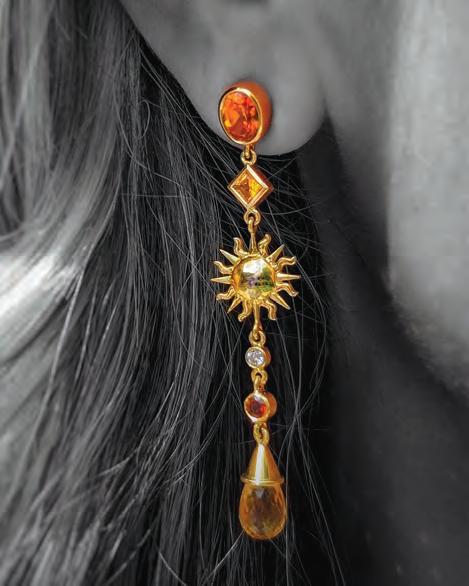
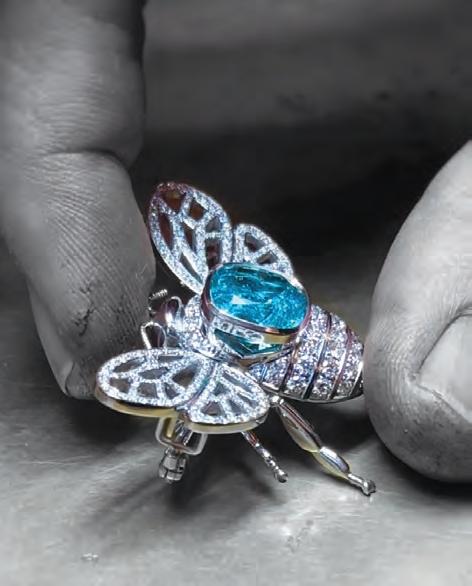
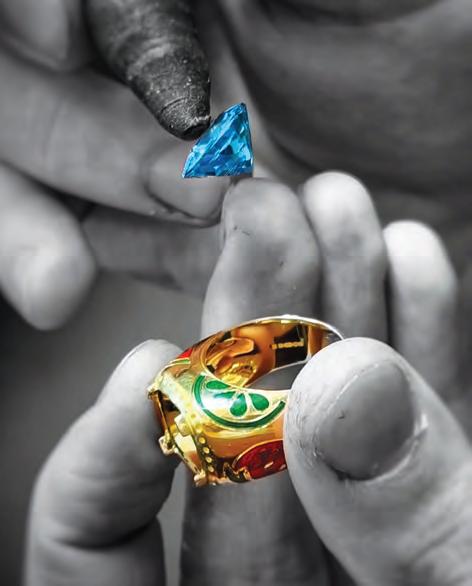
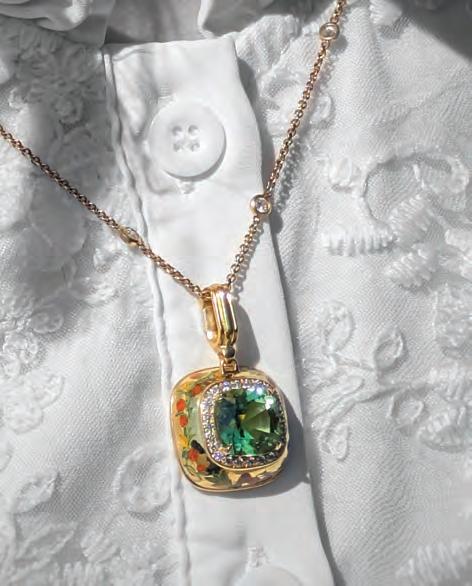
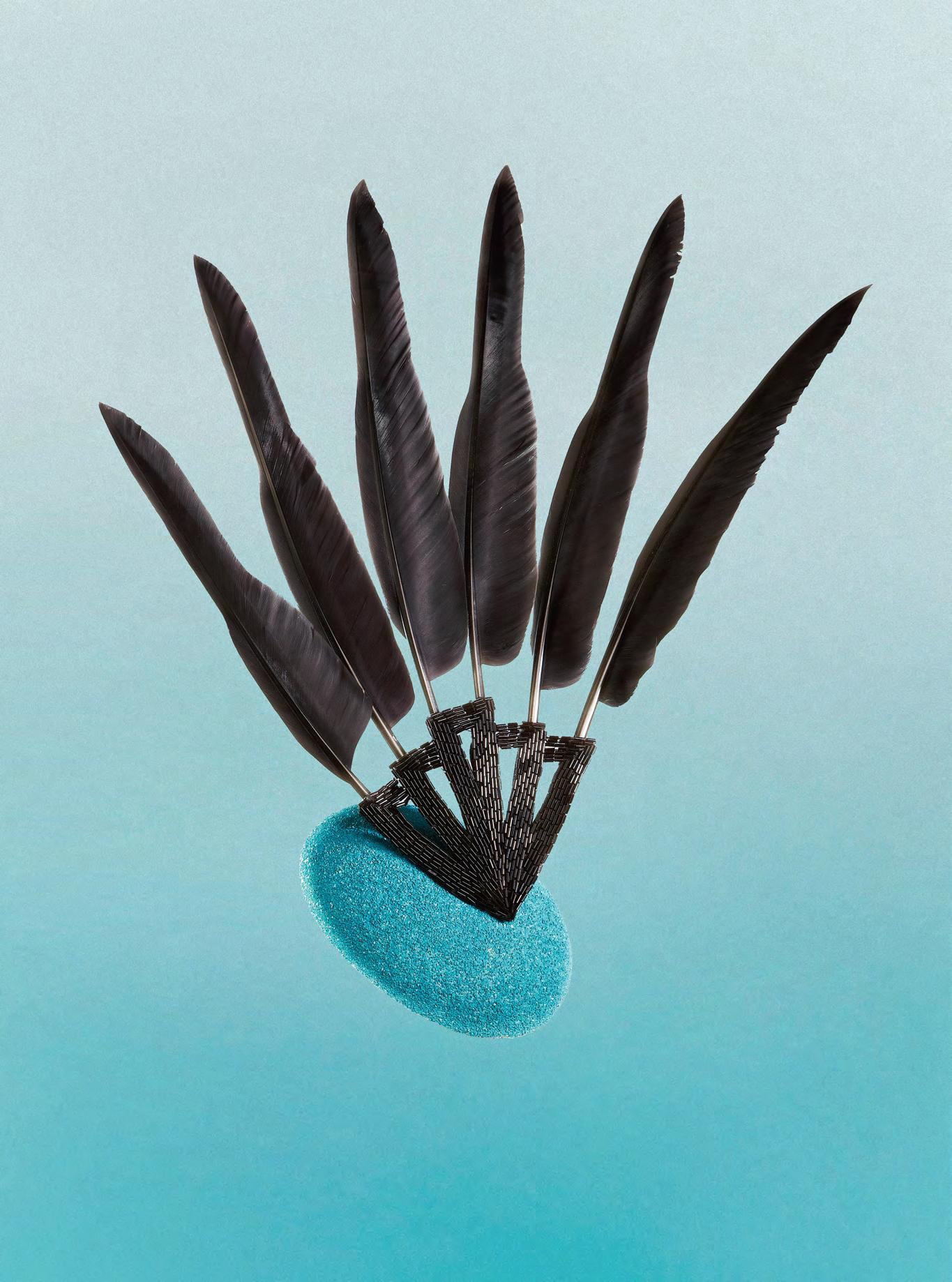
It is a quirk of history that the hat – stalwartly sported for its head-warming qualities since the last major ice age, which peaked about 20,000 years ago – toppled off its perch during the second half of the 20th century. Still, what hats lost in daily currency they gained in celebratory flourish, with the result that one of the great pleasures of the social season is to ask ourselves: “What type of hat would bring me the most joy?”
Among the most joyous, for my money, are the couture creations concocted by Victoria Grant. Her veiled toppers, bejewelled berets, coruscating cowboy hats and fantastical feather fetishes are worn by the global glitterati. Madonna has been a loyal ambassador for years, wearing Grant’s creations for birthday celebrations, shows and events, while Beyoncé chose the milliner’s “Dark Horse” for her 2014 tour poster.
Other A-list devotees include Rihanna, Lady Gaga, Kylie Minogue, Zoë Kravitz, Nicole Kidman and Dita Von Teese, along with British style sirens such as Helena Bonham Carter, Joan Collins, Sienna Miller, Naomi Campbell, Kate Moss and Cara Delevingne. But, then, everyone can be a star wearing a Grant confection. As she notes, “We’re not the only country with a summer season, but ours is the one with the most space for creativity, and hats are the most fun element of this – the icing on the fabulous cake.”
Yet despite their fabulousness, Grant’s creations are never less than a cinch to wear: “perchers”, as sported by fashionable 18th-century ladies-about-town, they sit (discreetly) strapped on at a jaunty angle, impossible to knock off via wind, drink, or dancing. Once on, you could easily forget you were wearing a hat, were it not for the rapturous response. Over the course of a weekend during which I had to navigate a country christening followed by a lavish bash, I made a choice to simply switch from one VG stunner to another. For an alchemy takes place once hatted: everyone instantly deems the wearer interesting, without their being required to say anything. As an introvert, making my headwear rather than myself the centre of attention is a revelation. Grant chuckles: “My hats are designed not to be some po-faced social obligation, but a form of stupendous self-expression – to give confidence, not drain it. So many wonderful women tell me I’m their secret social weapon.”
Grant’s artworks may be exquisite, but – in true British style – they don’t take themselves too seriously, be it her ringed “Princess Alberts” or feathered two-fingered salutes. The milliner herself graced last year’s Goodwood Revival wearing backless gangster pinstripes and a dashing veiled fedora.
While Grant’s hats are on sale at Harrods, the vast majority of her work is bespoke, conjured over fizz-fuelled consultations at her Notting Hill atelier. Here, she assesses what shade, shape, size, fit and position will complement the wearer’s face: from the scale of mesh for the veil to which jewel should be its adornment. It’s a heady experience, watching oneself suddenly bloom – less the lost art of hat-wearing than discovering hats that are themselves the event. victoriagrant.com

There can be no more delightful a proposition than a day at the races, whether your sport involves horses or humans. And outfitting oneself for the occasion is very much part of the joy. For a few weeks prior to race day, there will be plotting: mental mathematics in which clothing, accessories and hat are weighed up against weather, transport, terrain, plus the aesthetic flights of fancy of our partner-in-crime.
The complex equation formed by these elements can fox the most confident dresser, such as which shoes could accompany which hat. For clarity is style’s great forgotten constituent, and never more so than at a meet that will be a cacophony of colour, print and pattern through which one desires to cut a swathe. What is needed is an obvious, unclouded statement. Drabness occurs where there’s an unhappy amalgam of gestures; it is wishy-washy, unsure. Style says something, it speaks.
Not least at Goodwood, where great British elegance is celebrated at its most raffishly relaxed. Race dressing has never looked back from that celebrated day in 1906 when Edward VII turned up in a linen suit and Panama hat, setting the template for stylish, rather than stifling
summer attire. Stuffed-shirtedness was out; wit, character and flair very much in. Where the fashion choices at lesser meets can look a tad fancy dress, here suave but insouciant sophistication prevails.
“How does all this translate into actual clobber?” you may ask. Clarity means clean lines, considered shapes, tailoring even where the effect is relaxed; consideration, yes, but with lack of fuss. Coordination should feel artful rather than pained, less obsessed with the matchymatchy than the cunningly juxtaposed. Lend verve with cracking sunglasses, a knock-out bag, or audacious earrings (head to Essentiel Antwerp and Felt on Chelsea Green).
Names to conjure with on the frock front include Erdem, Roksanda, Alessandra Rich and royal favourite, Suzannah. In the mid-market, where so many of us linger, we have Beulah, Saloni, Self-Portrait and ME+EM. On the High Street, Ghost can scrub up nicely, while even a Zara trouser suit may prove winning if exquisitely adjusted to fit. And then, of course, there will be vintage treasures. Liberty’s second floor will provide inspiration, even if the reality might be hunted down on Vinted. As for undergarments: brevity may be the soul of lingerie at all other times, but not for the vicissitudes of the British season. One style maven confides that her secret is “silk thermals – even in July”.
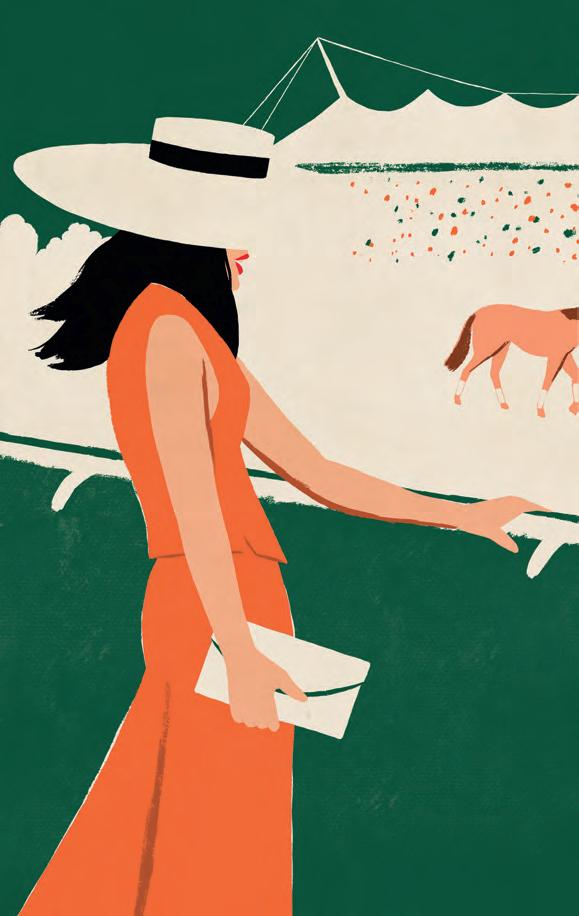
WORDS BY REBECCA HALL
The sporting events of the summer season have been a place to keep score… of how many pairs of espadrilles one can spot. Net-A-Porter reported a 50 per cent year-on-year increase in sales of the distinctive shoes, whose many outings on paparazzied feet prompted the Daily Mail to declare that we are now in the midst of “the summer of espadrilles”. Then again, you’d have to go back a very long way to find a summer when no one was out and about in these fashion perennials.
First worn by Spanish soldiers and peasants as far back as the 13th century, espadrilles are characterised by braided soles, traditionally made from esparto grass, native to Southern Spain. The unassuming, breathable-yet-closed-toe shoe has evolved since then and spawned many new variations – almost always with the addition of a more practical rubber sole, and often with ankle straps or ribbons. The practical closed toe, once a key element of the style, has become an optional extra, while the heeled espadrille that is ubiquitous today can be traced back to a 1970 design by Yves Saint Laurent, created in collaboration with the shoemaker Castañer.
In essence, however, the purest form of espadrille remains a unisex proposition. And indeed, how many shoes are there that you can say both Picasso and Kate Middleton liked to slip into?

In praise of the blazer
A roomier alternative to the suit jacket, the blazer was originally boating wear, and is still called a “sports jacket” in the US. Its name derives either from the “blazing red” jackets worn by an 1820s Cambridge rowing team, or from HMS Blazer, whose crew, in 1837, wore double-breasted jackets with brass buttons. Among those associated with making the blazer a fashion staple is Claire McCardell, the influential American designer who pioneered leisurewear suited to the changing lifestyles of women in the 1940s and ’50s, and it is a cousin, of sorts, to the Chanel bouclé jacket, created in 1954. Meanwhile, its association with school uniform saw it embraced – albeit subversively – by punk rockers. When in doubt, simply team your blazer with another enduring classic, the white T-shirt, and you can’t go wrong.


The zip, or zipper, was patented in 1917 in New Jersey. Early zips were metal, with plastic zips becoming widely popular in the late 1960s. This means that vintage clothing with a zip often has the metal kind (as do some contemporary garments), and these can sometimes become stiff and get stuck in place. To keep a zip running smoothly, pick up a simple beeswax block – available for as little as £1 –and rub it over the teeth of the zip any time it feels tight or hard to operate.

When the costume designer employed on Martin Scorsese’s 2013 movie
The Wolf of Wall Street wanted to capture the relaxed but studied luxury in which the film’s antihero Jordan Belfort coddles himself, the Ray-Ban sunglasses and 18ct gold watch made for a good start. But this being (on screen) the late 1980s, what really signalled Belfort’s WASPish success was a pristine white Ralph Lauren polo shirt.
Indeed, given its simplicity – essentially it’s just an easy shirt with a two or three button placket, soft collar and, typically, some brand logo –perhaps no other garment better expresses the state of enjoying lots of (new) money. The classic British Sloane Ranger styling sees the polo shirt worn with collar expressively, unceremoniously turned up; suggesting that one spends summer not only in Chelsea but also in exotic beach houses or aboard yachts. Those traditionally most middle-class of sports, golf and tennis, have also embraced the polo shirt. And all that’s before we even consider polo itself, of course.
Despite its name, it was in the world of tennis that the polo shirt originated. The French Davis Cup player René Lacoste may have invented the first steel racquet, but he’s better known for his introduction, in 1927, of a short-sleeved shirt in jersey petit piqué – a double weave knit chosen because it’s lightweight and breathable. The soft collar was just about stiff enough to be, yes, turned up to protect the back of the neck from the sun.
This was one of the first purpose-designed sportswear garments – just about fitting within the constrained and conservative rules that dictated tennis attire at the time. So practical was the design that six years later Lacoste put it into commercial production, complete with the alligator logo (after his nickname) that would do so much to kick-start an unceasing cultural obsession with the visible expression of brands on our clothing. That, of course, was something Ralph Lauren would recognise with such huge success when he launched his line of relaxed polo shirts in 1972, complete with polo player-embroidered logo. “On one level there’s an aspirational quality to having a polo player [on your polo shirt],” Lauren once said. “On another level, it’s just a great shirt with lots of colours.” But, of course, the reverse is also the case: the polo shirt comes into its own precisely because it’s such an effective vehicle for understated branding. So why isn’t this sartorial landmark called the tennis shirt? Good question, since although it was subsequently embraced by polo players, it was far more visible through the racquet sport. But then the polo shirt, perhaps more than any other garment in menswear, has found resonance across multiple different lifestyles and, with that, across class divides too.
In the USA, the polo shirt would become as much a staple of West Coast slacker-skaters as East Coast preppies – and, in between, something of a middle-aged everyman garment too, worn with khakis and a bit of a belly. In the UK, for every posh boy in a polo – think Jude Law in The Talented Mr Ripley or maybe even James Bond, from Sean Connery in Dr No through to Daniel Craig in Casino Royale – there’s a working-class sub-culture that has made the shirt its own too.
The Mods and Skinheads – in a polo with drainpipe jeans or Sta Prest trousers, Crombie overcoat and pork-pie hat – kept their choice of shirt homegrown. While they never met on court, Lacoste’s great rival in business would be Fred Perry, who, by 1952, was pushing his own laurel wreathbranded polo shirt. Enter, too, that 1980s polo-loving style tribe the Casuals, with its love of rare labels, technical jackets and bold foreign sportswear –arguably the progenitors of modern menswear sensibility. Not for nothing were those from Manchester known as Perry Boys.
As is so often the case when a garment beloved of the well-to-do is coopted by the less well-to-do, there was even a different way of wearing the polo shirt: (as Britpoppers would also later do) buttoned to the neck with collar neatly turned down. This was a modernist look that, as a more relaxed corporate dress came in, helped to make the polo suitable for wear to the office or under a blazer. And it is perhaps in that style that the real versatility of the polo shirt is revealed: neither too-casual T-shirt, nor too-stuffy shirt, it’s comfortable everywhere, literally and figuratively.
VERSATILE, LIGHTWEIGHT, AND AVAILABLE IN EVERY COLOUR UNDER THE SUN, THE POLO SHIRT IS THE ULTIMATE SUMMER STYLE STAPLE. JOSH SIMS TRACES THE SPORTY ORIGINS AND ENDURING POPULARITY OF THIS SMART-CASUAL CLASSIC

THE CASUALWEAR CLASSIC INVENTED FOR ATHLETES HAS HAD A COMPLICATED FASHION JOURNEY, YET REMAINS A PERENNIAL FAVOURITE, SAYS JOSH SIMS
Has ever a garment – especially such a practical, easygoing one – had such a complicated PR profile as the hoodie? At one time considered a near-synonym for criminality and youth keen on hiding their faces from CCTV, the garment had a starring role in then Prime Minister David Cameron’s infamous 2006 “hug a hoodie” speech, urging the public not to demonise teenagers in hooded garb.
Hooded clothing has, in fact, been with us since medieval times, as the chosen attire of monks, among others. Despite the modern-day hoodie’s questionable reputation – with some US high schools going so far as to ban the style altogether – it has become a near-ubiquitous garment and a “stealth wealth” favourite of the Silicon Valley set. Efforts to dress it up, on the other hand, are ill-advised; it’s the hoodie’s nononsense utility as casualwear that has made it a staple since its invention in the early 1930s, arguably by the US sportswear giant Champion. The Champion hoodie is a cosseting half-way house between a sweater and a coat, with that handy kangaroo pouch pocket for cold days, and all the comfort of a sweatshirt – ageing similarly well to become an old favourite, too.
IT HAS BECOME A “STEALTH WEALTH” FAVOURITE OF THE SILICON VALLEY SET
What Champion marketed as the “hooded sweatshirt” was, originally, its attempt to provide athletes with an item of clothing that allowed them to cool slowly and safely after their exertions, or to really build up a sweat during them. That’s why Rocky wears one – in the classic grey marl – to beat up frozen sides of beef in that celebrated training montage.
The company could surely never have predicted how, almost a century after its invention, the hoodie would become the go-to choice for anyone working outdoors, from buildingsite labourers and tree surgeons to, yes, muggers. And also, for that matter, since the rise of WFH, for anyone working indoors, too. The hoodie is perhaps the next best thing to, or even better than, a onesie: offering supreme comfort while still allowing the wearer to retain some sense of self-respect.
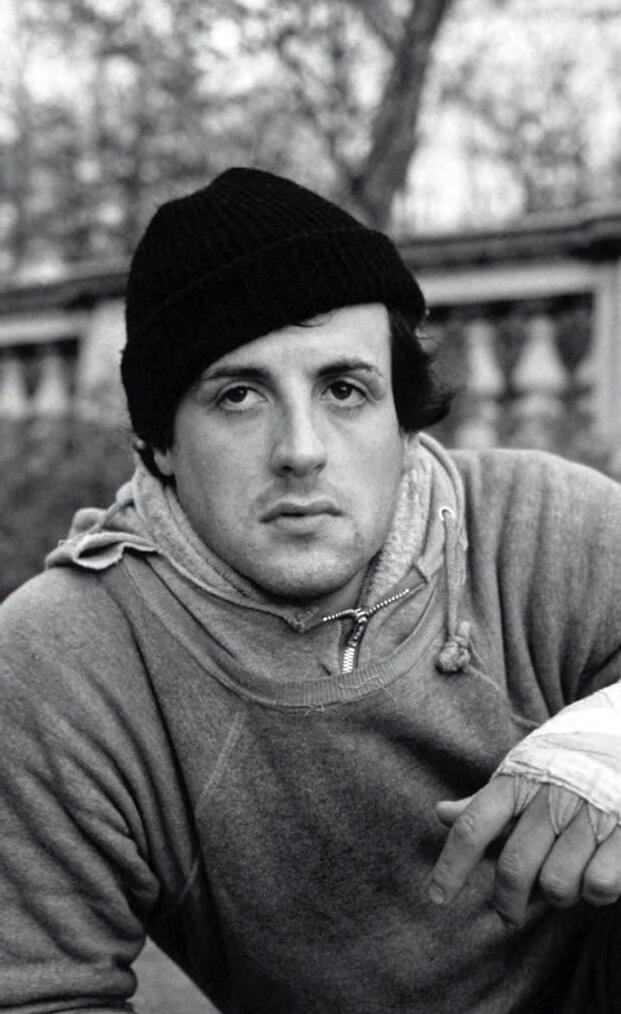

Details on display – N05
WORDS BY JAMES COLLARD
The key fact about the car shoe is that this is footwear intended to be worn, for the most part, when the person isn’t on his or her feet. Like it says on the tin, the car shoe is for driving – part of that long run of accessories, mostly in leather, that luxury brands started producing in the 20th century, instead of bridles and saddlery, when horses made way for horsepower. So, in the place of hard leather, the car shoe’s sole is soft, perhaps even suede, and dotted with bead-like gommini – rubber pads designed to give good grip as you press down on an accelerator pedal. They’re comfy, almost like wearing slippers, although singularly unsuitable for anyone who might have to run for a bus or plod to work. Thus, the car shoe signals a life of moneyed leisure, as befits what is essentially a deconstructed loafer, suggesting that you’ve just stepped away from your Ferrari, perhaps. The car shoe is indeed Italian in provenance – invented by one Gianni Mostile in 1963, his Car Shoe brand now part of the Prada Group, with Tod’s the most notable among a number of emulators.
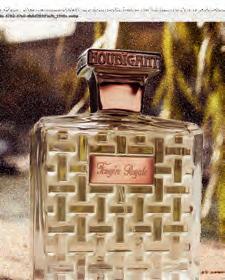
That we can be drawn to a scent by a sense of nostalgia should come as no surprise. Our brains are wired in such a way that even a whiff of something familiar can bring back memories: anything from the smell of apple pie to freshly mowed grass. Perfumes, too, can be powerfully evocative – of the people who wore them, even of the times when we wore them. So it makes total sense that there is a market for vintage perfume. Indeed, people will spend hundreds, even thousands, on a scent from the 1970s or ’80s that has been discontinued –and which perhaps couldn’t be made today, as many traditional ingredients are now banned. It makes sense, also, that men who like wearing vintage clothes might be drawn to wearing old-fashioned scents. Perhaps we like the type of old-school Bay Rum after shave liberally applied at trad’ barbers, or those citrus scents long worn by stylish Continental types (possibly not Old Spice, although it has its fans). Maybe a classy revival, such as Houbigant’s Fougère Royale, a 21st-century reinvention of the 19th-century perfume that inspired many of today’s fougères – fragrances known for their fresh, grassy, and mossy scents – only updated to accommodate our more masculine taste in perfumery. The past is another country, we’re told – it can also smell rather good.
Houbigant’s


PACKED INTO A SUMMER PUDDING, PILED HIGH AND SMOTHERED IN CREAM, OR POPPED STRAIGHT INTO YOUR MOUTH – HOWEVER YOU ENJOY THEM, THE TASTE OF BRITISH SUMMER IS IN ITS BERRIES, SAYS JOHANNA DERRY HALL
Though strawberries often get top billing – their status as the quintessential summer fruit perhaps secured by the fact that they’ve been served with cream at Wimbledon since 1877 – it’s actually the raspberry that has the longer history on these islands. In the 4th century, the Roman writer Palladius recorded how raspberries, which had previously grown wild, were being cultivated. Archaeologists have indeed found raspberry seeds at Britain’s many Roman forts. But it was King Edward I who began the raspberry boom in Britain during the 13th century, encouraging people to grow the fruit which, while delicious, was also useful as a colour for paintings and illuminated manuscripts. Raspberry leaves were also used in medieval times as medicine; the 17th-century English botanist Nicholas Culpeper describes how raspberry leaves are “very binding and good for fevers, ulcers, putrid sores of the mouth and secret parts, for stones of the kidneys and too much flowing of the women’s courses”.
Today, the majority of Britain’s raspberries are grown in the Tayside region, taking advantage of Scotland’s long, light summer days and the fertile soil surrounding the river Tay. It’s also where raspberry hybrids like tayberries and tummelberries come from, crosses of blackberries and raspberries that are just as delicious and flavoursome as their parent breeds.
The strawberries we recognise today are also hybrids. Small woodland strawberries have grown wild across the British Isles for centuries, and larger varieties came from crossing these with the Virginia strawberry, brought over to Europe in the 16th century. The tradition of strawberries and cream is a summer staple that goes well beyond tennis, with more than 58,000 of them served at the Qatar Goodwood Festival each year, for example. And from racecourse to back garden, no respectable jug of Pimm’s is served without strawberries.
Though less iconically British, summer is also the season for redcurrants –dangling strings of perfectly round, edible baubles, in season from June to the end of July – and for their cousin the gooseberry, the first soft fruit of the summer (with red gooseberries being sweeter than the better-known green ones). The fruit was a source of great competition in the 19th century, when members of “gooseberry clubs” across the UK, particularly in the north of England, competed to grow the heaviest fruit. It’s a contest that’s apparently not over yet; according to the Royal Horticultural Society, the current world record for the heaviest gooseberry was set in 2013 at 64.49g (2.27oz), about the size of a large hen’s egg.
The proper purpose of a berry, of course, is not to weigh it, but to eat it. From the sweetness of a strawberry, the juiciness of a raspberry staining your fingers pink, the way a blushing gooseberry or redcurrant bursts in your mouth when you bite it – at its best, eating summer berries is a life-affirming, multi-sensory experience.
Enjoy fresh strawberries at Qatar Goodwood Festival, 29 July-2 August 2025
We all know that running regularly brings a host of physical benefits, from improving your cardiovascular health to strengthening bones and helping to keep off those extra pounds. But if, like me, you’ve been pounding the pavement – not very seriously – for more than 30 years, it’s easy to find yourself in a rut. As I approach the latter half of my fifties, I’ve been running 5ks twice a week, at more or less the same mediocre pace, for more than a decade. I confess, it’s getting a bit dreary. And despite my age, I can’t help wondering: could I become a better runner?
To answer this question, I enlisted the help of Adam Clayton of We Run, which has a network of coaches across the UK. Based in Worthing, Clayton helps clients from all over West Sussex. “The classic scenario,” he says, “is people coming to me and saying, ‘I got a bit drunk at the office Christmas party and signed up to run a marathon.’ What we don’t want is to help them run a marathon, only for them to then say: ‘Right, I’m never doing that again. I’ve chucked my running shoes in the bin.’ Ideally, we want to make them lifelong runners who really enjoy it.”
There are, of course, countless running programmes to be found online, and if you’re lucky enough to be blessed with good technique and plenty of self-discipline, you might be able to raise your game without the help of a coach. But to get the best out of the time we spend training, most of us will benefit from calling in the professionals.
This is especially true of people like me, who are already running but with, let’s say, room for improvement. The first thing Clayton usually does is a one-to-one running assessment. “We call it a runners’ MOT,” he says. “It’s normally 90 minutes and gives me a chance to assess a person’s running mechanics as well as finding out about past injuries, goals and current physical activity – or lack of. I then write a report with recommendations for next steps. Some people just do that as a one-off, to reassure themselves that they’re on the right track.”
As Clayton explains, poor running technique is often down to strength imbalances or weaknesses in your kinetic chain. As part of the MOT, he asks the individual to perform certain exercises. In some cases, they’re able to do twice as much with one leg as the other. This inevitably has an impact on the way they run and can lead to recurrent injuries. Becoming a better runner is largely about identifying these imbalances and strengthening different components of your body with a range of targeted exercises. He adds that possessing good core strength is more vital than we realise: “If you were to cover up the bottom half of Olympic runners, you’d hardly know they were running. But when you watch a park run, you see people leaning
and twisting and rolling their shoulders – due to lack of core strength.”
Clayton insists that with a little bit of extra effort, there’s nothing stopping me from becoming fitter and faster, even in midlife. The crucial thing is to avoid injury. When you’re young, you can “hammer sessions, six days out of seven” but as you become more advanced in years, the motto “no pain, no gain” should be approached with caution, and adequate rest time (two to three days) allowed between runs.
“As you get older,” he adds, “rather than competing against other people, the person you should be trying to beat is your younger self. I work with one guy who’s much fitter at 59 than he was at 54.”
Carrying on as I have been, sadly, is not going to cut it. To become a better runner, my only option is to step out of my comfort zone and mix things up. If I continue to plod along, doing the same run, at the same pace, the best I can hope for is a gradual decline.
A typical programme might include a 10 or 12-day cycle that includes – in addition to my usual, steady-paced outings – one run at least 10 per cent longer than my standard 5k, alternated with speed sessions involving, say, five runs of 800m each, at a faster pace than my normal five minutes per km, with a two-minute rest between each. In addition to this, I might also throw in a hill session. “You get the most bang for your buck doing hill repeats,” says Clayton. “That could be hill runs or, if you’re really robust, sprints. These can be as short as 10 seconds up a runnable incline, but they’re often how you get the quickest improvements. We have a saying: ‘Hills pay the bills.’”
Much is made of the mental benefits of running, the serenity that descends either during or after a decent run. But Clayton underlines another crucial way to enhance the mindfulness of your training routine: to focus on the journey rather than the destination. He works with one young athlete, for example, who went from a 40-minute 10k to running it in 32 minutes – in the space of just three years. His secret? “He wasn’t fixated on a goal. He didn’t set out to run 10k in 32 minutes. He set out to run regularly and enjoy the process of improving.”
One final question: grass, pavement or treadmill? “Whatever works for you,” Clayton muses. “But it’s not just about what’s good for your body, it’s about what’s good for your head. And for most people, that means running in nature. Running on a treadmill is a useful way to get fit because you set a pace and you have to stick with it. But is it fun? Not really. Whereas I tend to run on the South Downs. I listen to the birds, I watch the deer nibbling the grass. The time flies by.”
To find out more about working with a running coach, visit we-run.co.uk


FLORAL TASTES AND TRENDS MAY COME AND GO, BUT IS THERE A RENEWED APPRECIATION FOR THE SIMPLE GARDEN ROSE?
FLOWER FARMER REBECCA STARLING REVEALS WHY THESE CLASSIC BLOOMS ARE BACK IN BRITISH VASES
My mother’s roses formed a rambling, tangled hedge in my childhood home. Their arching stems twisted together to form a haven for nesting birds and their open centres generously attracted a cloud of bees and other pollinators. I loved the moss roses with their soft furry stems (no scratched arms when retrieving lost cricket balls) and the musk varieties for their incredible scent.
Single-petalled roses with open yellow centres are my favourite now. There’s a fragility and delicate perfection to these flowers. I’ll often cut a stem in bud and pop it in a vase on my desk so I can watch the flower as it opens. And while the double-petalled varieties are known for their longer vase life, in a cool room single roses will often last at least five days in the vase. Francis Meilland grows exceptionally well on our flower farm and its large, scented, soft pink flowers are much loved by my family. The Frenchbred Meilland roses all cope well in our hot, dry conditions. The Children’s Rose (which has no thorns) is a newer addition to our collection.
In ancient Greek mythology, the rose was connected to Aphrodite, the goddess of love and beauty. The Romans then also associated the rose with their goddess of love, Venus, and the connection between romance and the rose was secured. Roses are centre stage in so many of our most important life moments: the declaration of first love, a pristine wedding bouquet, the
birth of a baby or a birthday bunch. Or it could be more than a bunch: in 2010, shortly after I first met my future husband, I was living in a thatched cottage in a pretty Cambridgeshire village. The uninspiring narrow front garden was laid to gravel, so James decided that rather than giving me cut flowers for my birthday, he would create a rose garden so I could always have fresh flowers in the cottage. Some of the varieties he chose for that garden are ones that I also recognise in the many roses grown around the Goodwood Estate, including Mme Isaac Pereire, Cardinal de Richelieu and Graham Thomas.
Over the ages, we have been captivated by the rose’s many forms, colours and fragrances. And yet, recently this most eulogised of blooms has fallen out of favour as a cut flower. Consumers became disheartened with the sad, scentless hothouse roses imported from Kenya, South America and other faraway places. Tight, cone-shaped blooms, these flowers sulked and stubbornly refused to open. But spare a thought for the stems’ difficult life journey, subjected to multiple chemical baths to satisfy strict import requirements, dehydrated and rehydrated so many times while being transported that the flowers were effectively dead. Hardly surprising that people began asking florists for anything but roses. Even brides were shying away from this wedding-day staple.
While different countries’ import requirements vary, most need to ensure that unwanted pests and diseases aren’t introduced on live plant material, hence the multiple chemical baths for quarantine and pest control purposes. Rose varieties grown for the export market must be tough to withstand this
process and may be a week old when they reach the end consumer. Their scent is often bred out in favour of a longer vase life. This results in a limited range of scentless, tight-petalled varieties that bear little resemblance to the fragrant, beautiful heritage roses like those that visitors see growing at Goodwood. In response to these limitations, some florists began “reflexing” roses. This laborious process involves bending back petals one by one, opening up the flower and creating the effect of a larger, home-grown garden rose. This trend started in the USA, perhaps as early as the 1990s, and then slowly spread internationally. It gained significant popularity over the last decade, as large, long stemmed, white rose wedding bouquets became fashionable. Savvy growers realised, however, that garden roses looked even better than reflexed roses and could be grown locally, with zero air miles and much better fragrance. Boutique rose farms soon sprang up across the USA, with brides carrying big, ruffled long-stemmed bridal bouquets, and the dusty tones of Honey Dijon, Soul Sister and Koko Loko trending at weddings. Meanwhile, in the UK, there has been an explosion of small flower farms and hence a greater availability of locally grown roses. Sustainably minded florists such as The Real Flower Company, Shane Connolly, Phillippa Craddock, with their use of local flowers in recent royal weddings, have done wonderful things to promote British roses. The large, imperfectly perfect, blousy garden rose has always existed. There’s no need to import a tight rose, then spend hours reflexing it so that it can look almost like a rose growing naturally in a garden or local flower farm. With a return to appreciating the delights of a garden rose, we have come full circle.
“Secrets from the Flower Farm: Growing Abundant Flowers in Unpredictable Conditions” by Rebecca Starling (Thames & Hudson) is out now

HARRY HOLT, FARM MANAGER AT GOODWOOD, ON THIS SUMMER’S ORGANIC CROPS
At Goodwood Home Farm we’re on the thin, chalky soils of the hills, with less nutritional density than you might find closer to sea, or on deeper topsoils. That means we have to be selective about which crops we cultivate.
In organic farming, compared with a more conventional approach, you’re not using chemicals like artificial fertiliser as a substitute for the soil’s nutrients, although we do use manure from the cows housed at the straw yards over the winter. We’re not trying to outperform the soil that we’ve got, but to plant what suits it best. For example, barley can actually do better on thinner, less nutritious soil, and the type of barley we grow is used for malting the beer, which means we don’t want it to be very high in nitrogen levels. If those levels are too high, as a result of the soil, it doesn’t make malt quality.
We also grow heritage wheat to provide the flour for our own bread. However, we’ve now stopped growing the standard, modern wheat crops that we found to be less reliable in our soils, and we’ve switched those crops to oats instead. We established the oats in winter 2024 and we’ll be harvesting in late July and early August. It’s a crop that’s really good at scavenging nutrients from poor soils, putting roots down deeper than your typical crop of wheat or barley, over a bigger area. We can then mill oats for porridge or to create a traditional food source for our cattle and sheep. This year, come the autumn, we also plan to put some pigs back in the woods for pannage season, to go and fatten on any grubs and finds from the woodland floor. Ultimately, in everything we do, we’re working in harmony with the soil and what it can do best for us.


FROM 1 JUNE
GOODWOOD ART FOUNDATION
Following its official opening this summer, explore the Foundation’s two new contemporary galleries and a stunning 70-acre landscape featuring works by world-renowned artists, then savour seasonal, local small plates at Café 24.
SUMMER 1 JUNE–2 NOVEMBER Thursday to Monday 9.00am–5.00pm
WINTER
3 NOVEMBER–31 MAY Thursday to Monday 10.00am–4.30pm
29 JULY–2 AUGUST
QATAR GOODWOOD FESTIVAL DINING AT THE KENNELS
Start the day with lunch on the Putting Green, dine in the restaurant and enjoy the atmosphere of After Racing Music.
3 AUGUST
CLASSIC SUNDAY BREAKFAST CLUB
Our beloved Classic Sunday returns, spotlighting cars registered before 1 January 1985. Each year, this event grows in excitement as we showcase some of the finest classic cars and commemorate remarkable anniversaries.
24 JULY; 21 AUGUST
THE KENNELS SUMMER SUPPER CLUB
Dine alfresco with friends and family under the canopy of the Putting Green and enjoy a thoughtfully crafted three-course menu celebrating the best of the season.
3–8 AUGUST
GOODWOOD GUT HEALTH RETREAT
The Goodwood Gut Health Programme is designed to reset your microbiome, helping you improve digestion, boost energy, restore balance and enhance your overall wellbeing.
16 AUGUST THE KENNELS VINTAGE MARKET
Back for another year to get you styleready for Goodwood Revival. Stalls will be showcasing some of the most beautiful vintage clothing and accessories from bygone eras.
22–24 AUGUST HORSERACING OVER AUGUST BANK HOLIDAY
An enchanting three days of racing begins with the annual Friday night fireworks spectacle, lighting up the skies over the South Downs. On Saturday and Sunday, enjoy a relaxing weekend combining live music and summer entertainment.
12–14 SEPTEMBER
GOODWOOD REVIVAL
Set within the enchanting time capsule of the 1940s, ’50s and ’60s, Revival’s three days are filled with delightful surprises and unforgettable moments.


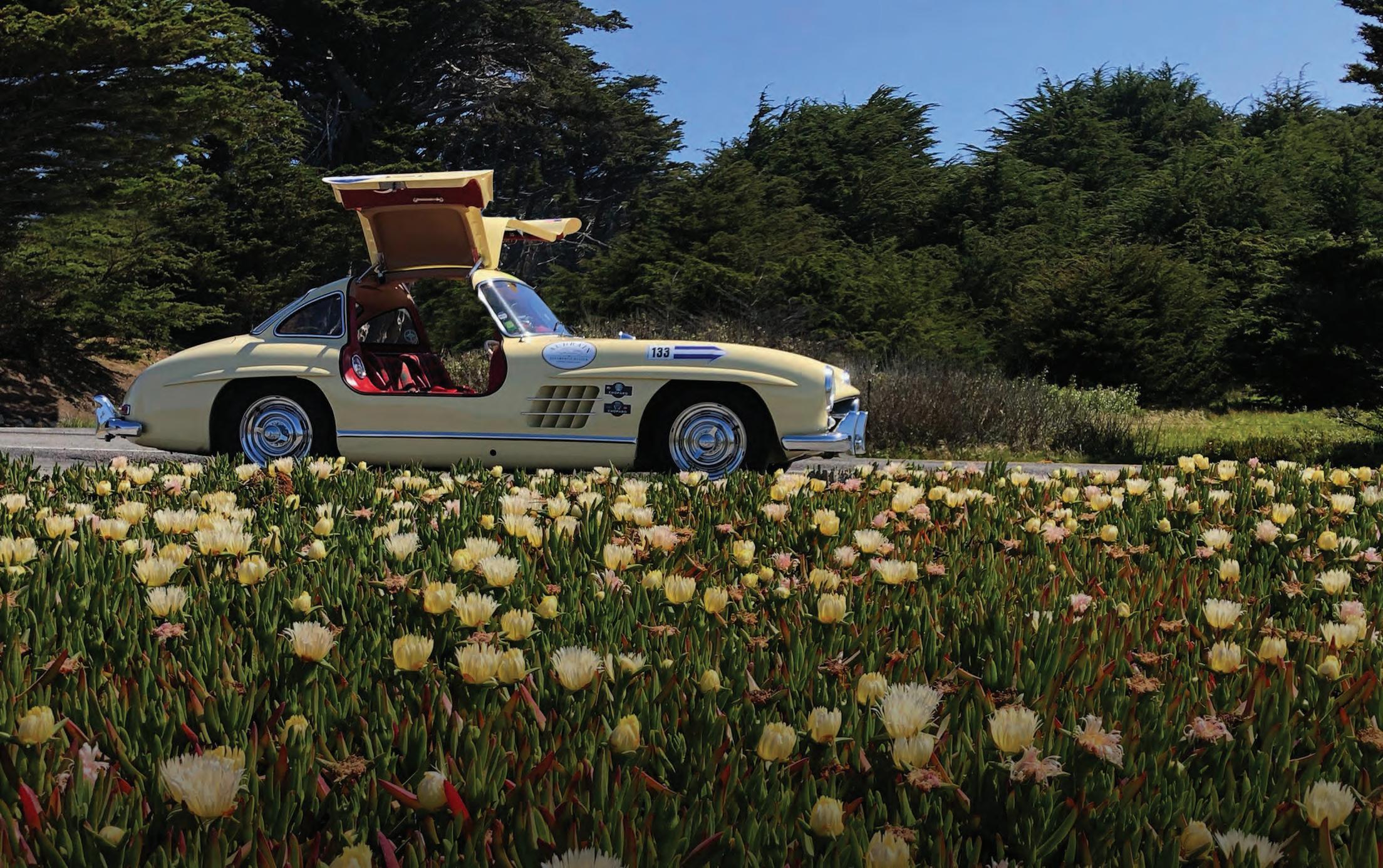



Motorsport’s ultimate summer garden party, the Festival of Speed presented by Mastercard, returns for 2025, bringing with it an ever more exhilarating lineup of motorsport legends and brands from around the world. Motorsport’s greatest will come together to put on a spectacular display of exotic machinery, relentless passion and outright speed on two and four wheels.
This year’s theme, “The Winning Formula – Champions and Challengers”, celebrates the cars, people and teams behind the thrilling sport. A key highlight will be the celebration of 75 years of the F1 World Championship , with Goodwood bringing together an expertly curated mix of legendary cars and drivers from F1’s past and present.
The iconic summer of 1995 will also be celebrated as part of a year that saw a series of British motorsport triumphs across various racing categories. Carl “Foggy” Fogarty will return to Goodwood to celebrate 30 years since his dominant World Superbike Championship victory. Standout moments throughout the weekend will include a touching tribute to Colin McRae’s historic World Rally Championship win, alongside a reflection on Britain’s resurgence in endurance racing with the McLaren F1 GTR’s unexpected victory at the 24 Hours of Le Mans. goodwood.com/motorsport/festival-of-speed/

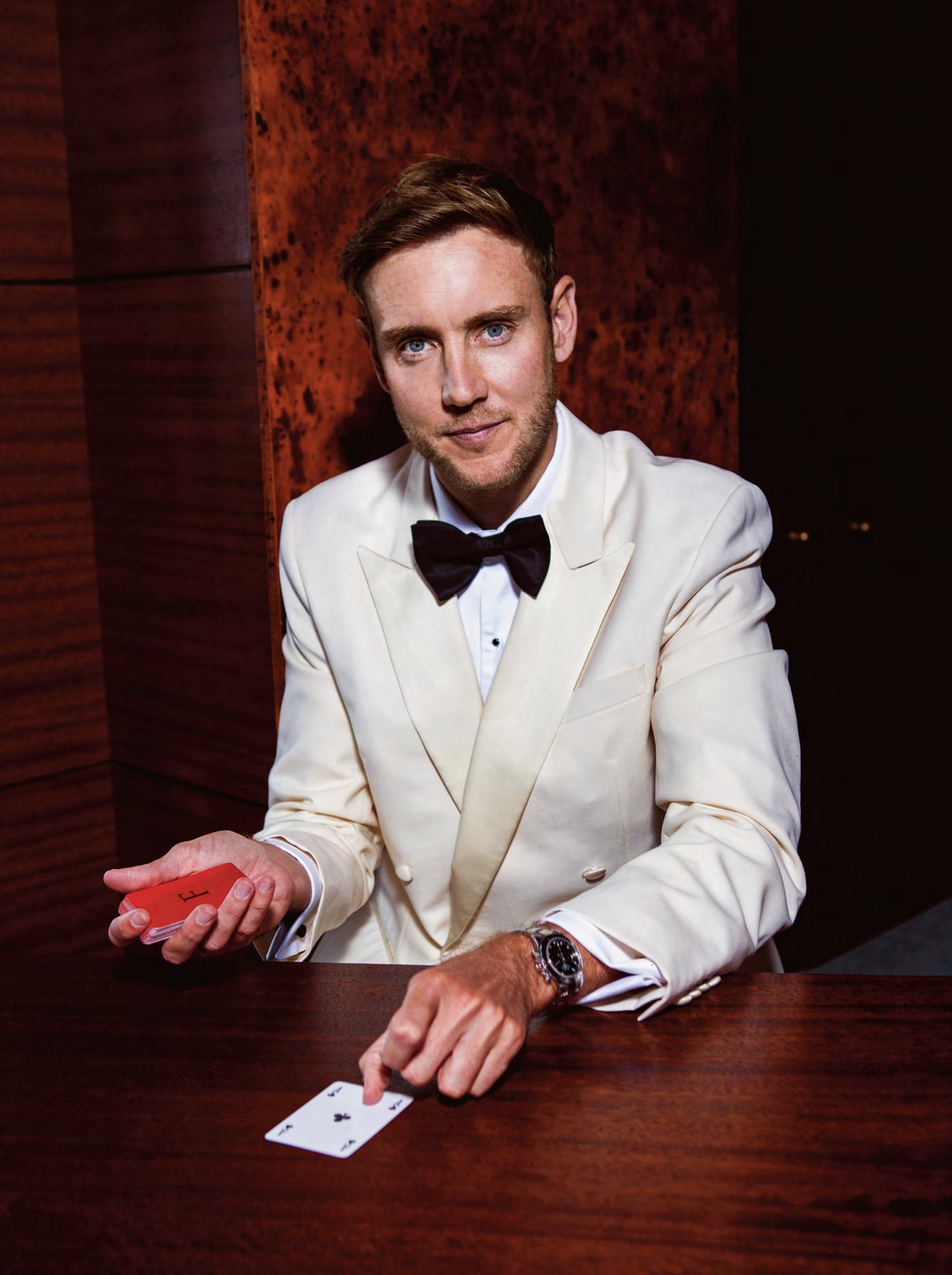



The five-day race meeting, Qatar Goodwood Festival presented by Visit Qatar, takes place from Tuesday 29 July to Saturday 2 August. The Festival is headed by three Group 1 races – Al Shaqab Goodwood Cup, Qatar Sussex Stakes and Qatar Nassau Stakes – all providing top-tier action and drawing the attention of the entire horseracing world.
On day one, racegoers will witness the unveiling of three showstopping gowns designed by this year’s Goodwood Talent In Fashion Award winner, RIXO, adding an extra layer of glamour to the proceedings.
The excitement continues on Thursday as Ladies’ Day kicks off with the Markel Magnolia Cup, the Festival’s all-female-jockey charity race. Riding a Dream Academy graduate Sienna Anderson is one of the 12 inspirational women who will race down Goodwood’s home straight in aid of The King’s Trust International’s Project Lehar.
As the action unfolds throughout the week, visitors can indulge in a glass of Veuve Clicquot at the Champagne Bar or enjoy a delicious lunch at one of the many exceptional hospitality venues, all while taking in the spectacular atmosphere at the world’s most beautiful racecourse. goodwood.com/horseracing/qatar-goodwood-festival/
Every picture tells a Goodwood story

KEANU REEVES AND NICO ROSBERG AT GOODWOOD HOUSE, JUNE 2016 The crowds at the 2016 Festival of Speed were excited to see movie legend – and lifelong motorcycle enthusiast –Keanu Reeves taking part in Goodwood’s famous Hillclimb, on an Arch KRGT-1 motorcycle that he codesigned. But perhaps the best thing about Reeves’ sojourn in West Sussex was that no one seemed more stoked about his trip to Goodwood than the man himself. “It was pretty thrilling to go up that hill today,” Reeves said at the time. “It’s a great honour to be here and to have the chance to participate. There are just so many legends here today; I’m surrounded by amazing machines and people.” Reeves was officially present because of his passion for bikes, but his keen interest in F1 – well documented since then, notably with his TV series Brawn: The Impossible Formula 1 Story – also made for a welcome distraction. “I’m gobsmacked to be able to be this close to them,” he said of the F1 teams present, “and to meet some of the manufacturers and the drivers. It’s like a dream come true.”
He’s pictured here at Goodwood House with racing driver Nico Rosberg – who would go on to win the Formula 1 World Championship later that year – both showing that, just like the rest of us, they’re not above posing for a selfie at a special moment, or being awed by Goodwood.

















































